
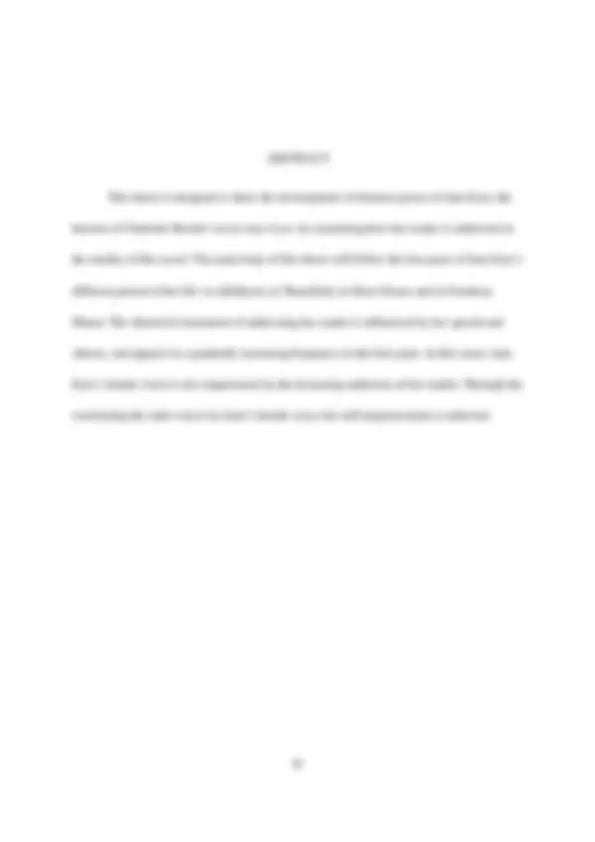
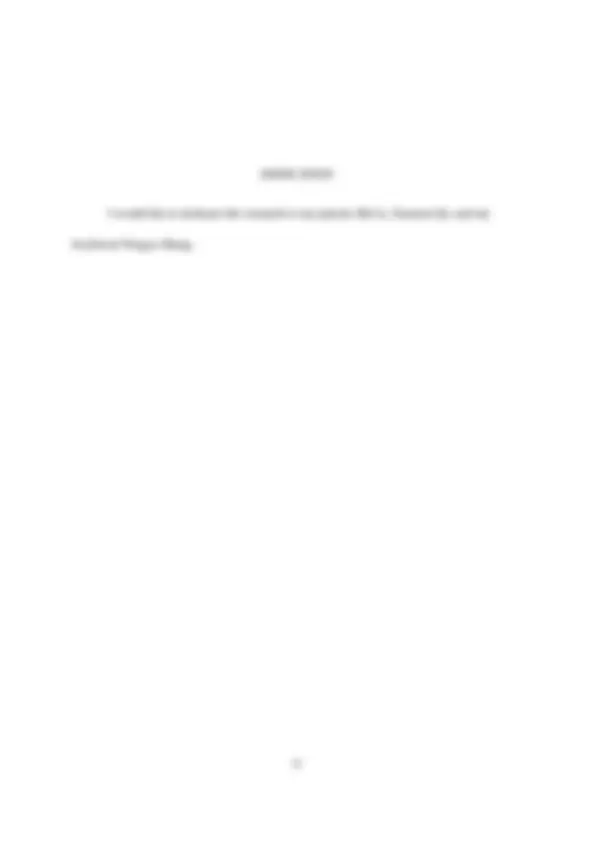
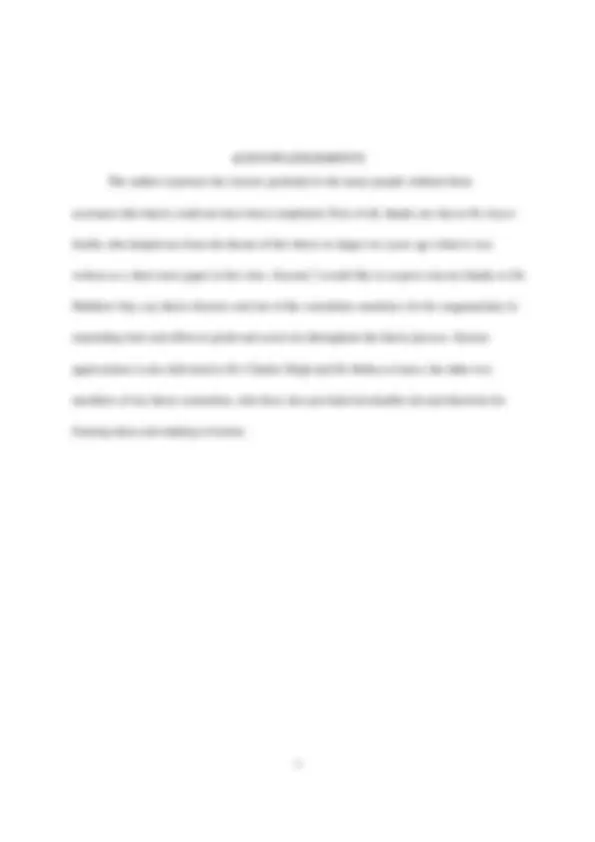
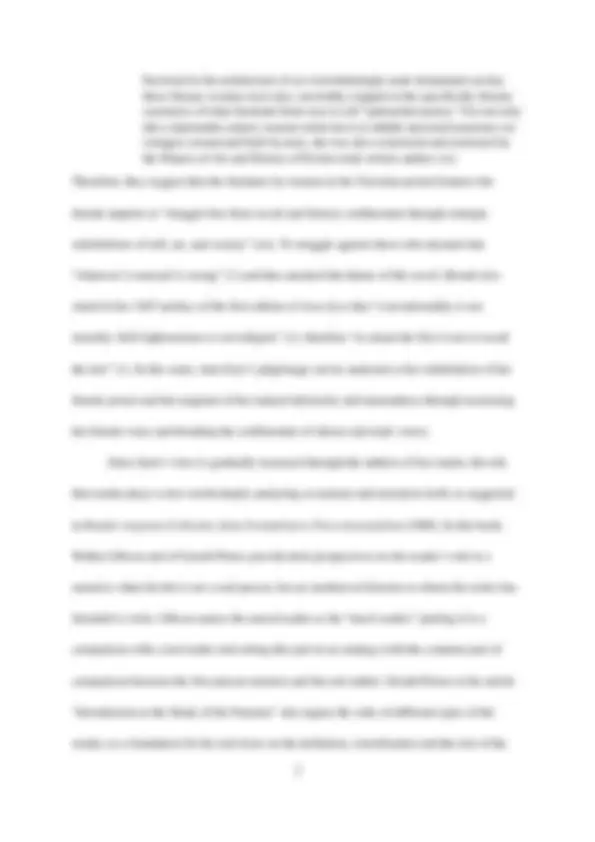
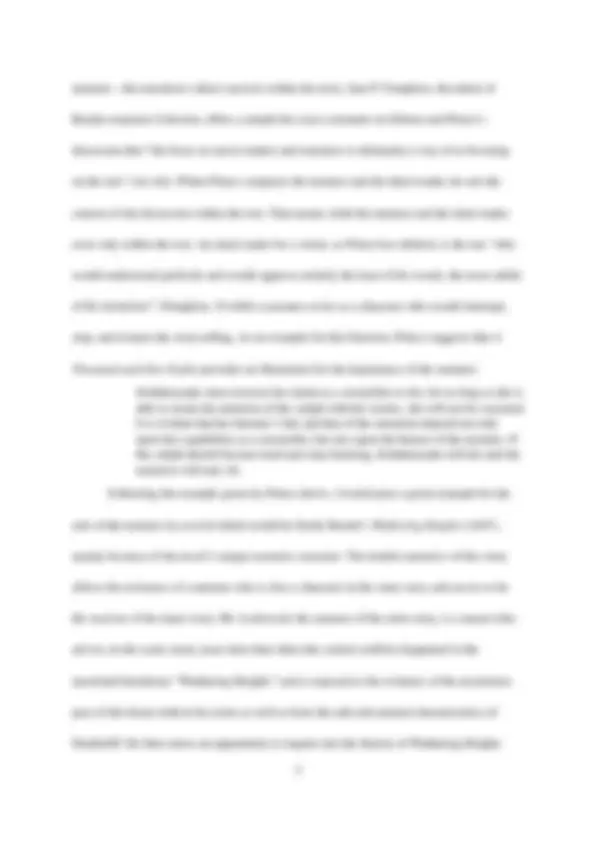
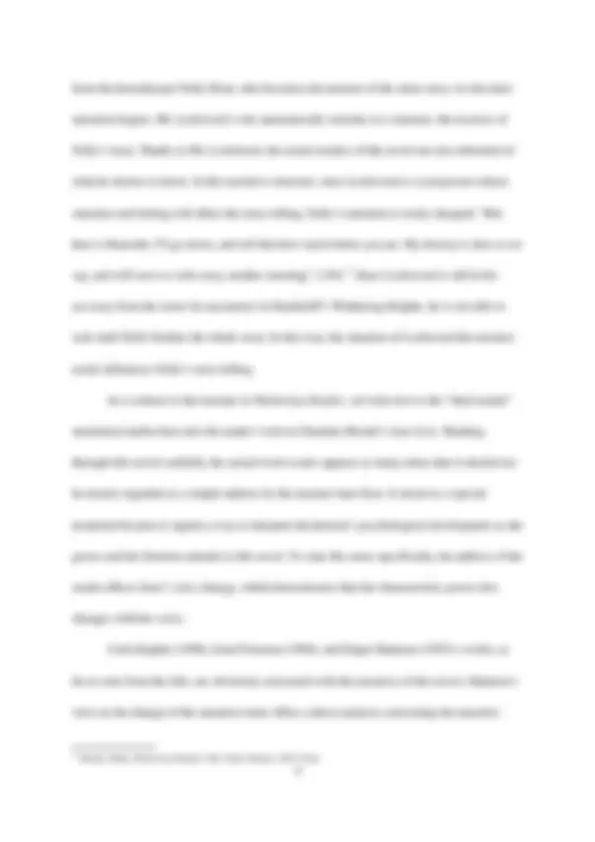
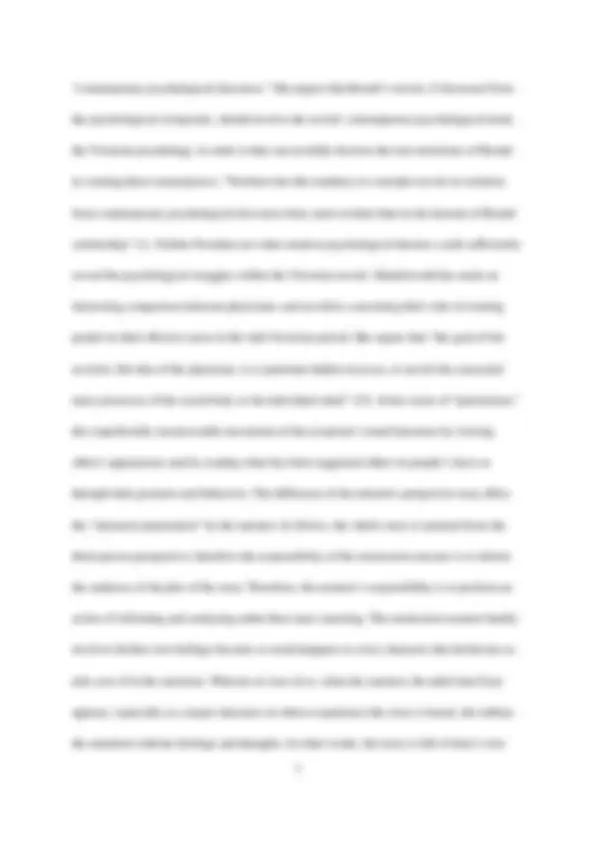
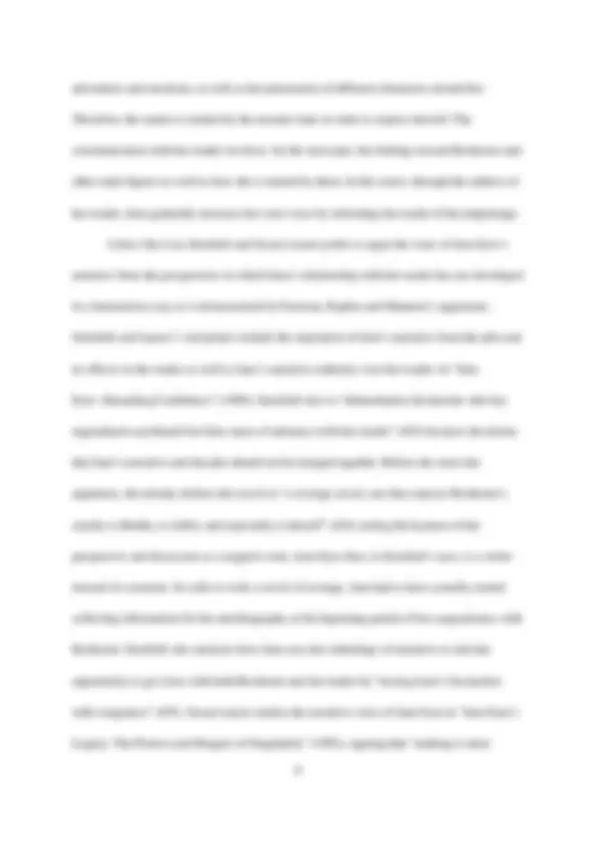
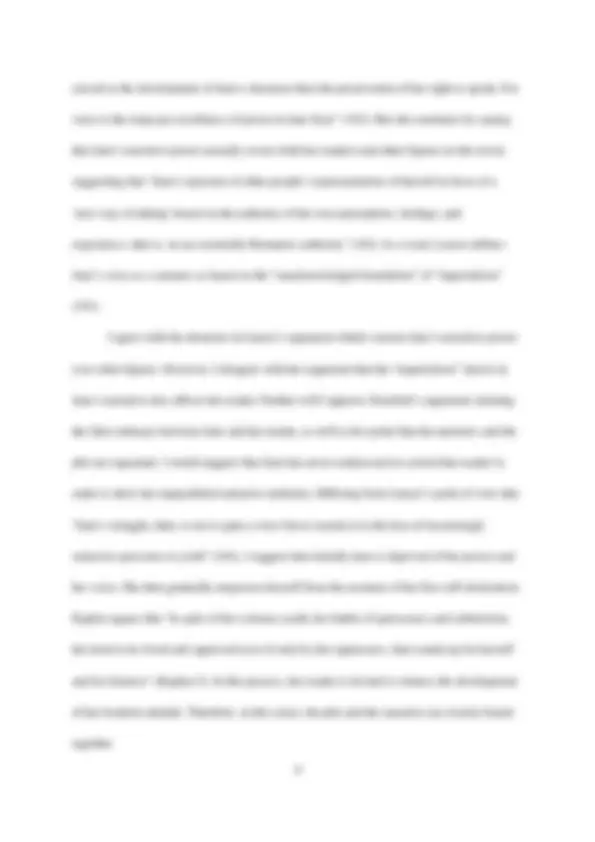
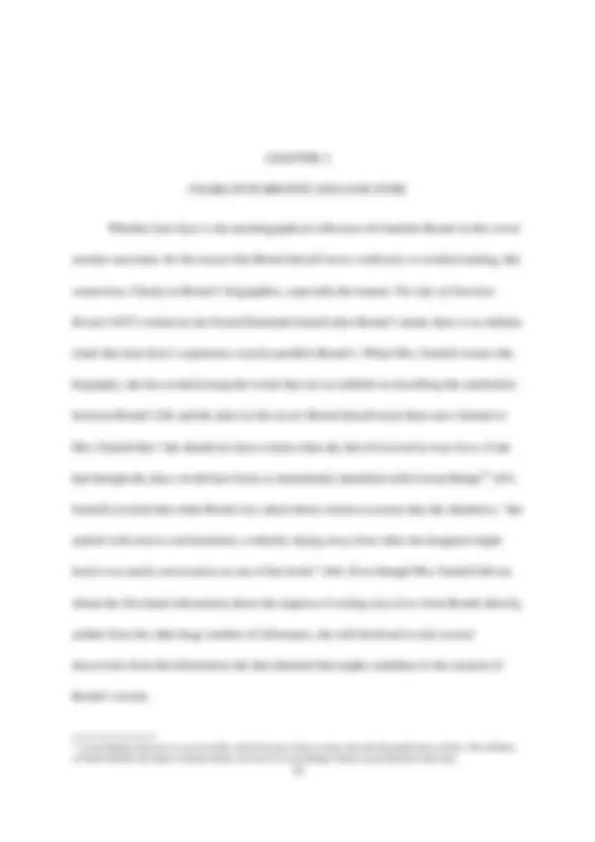
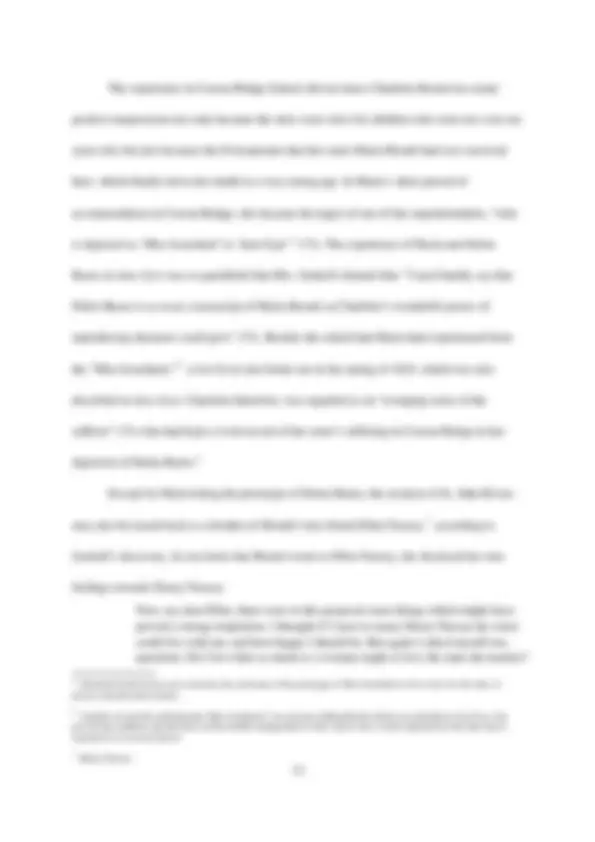

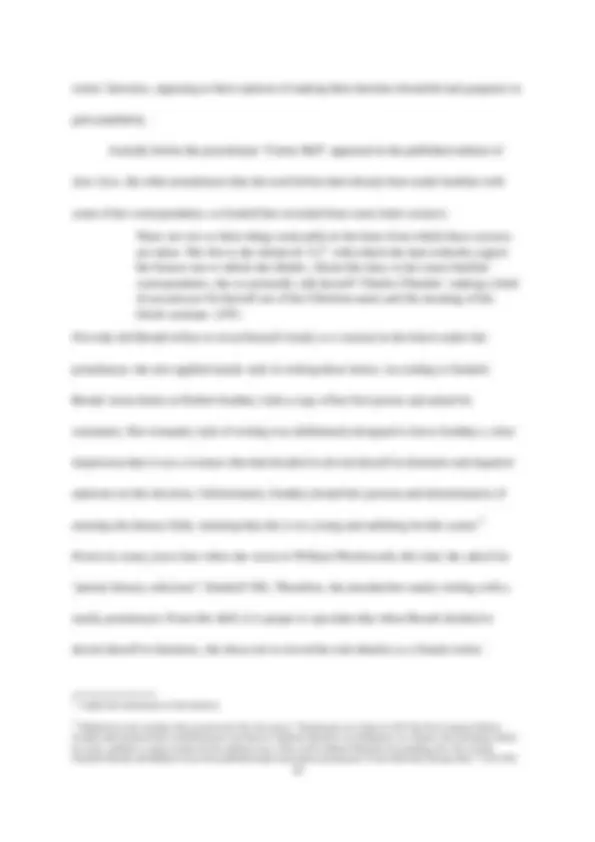
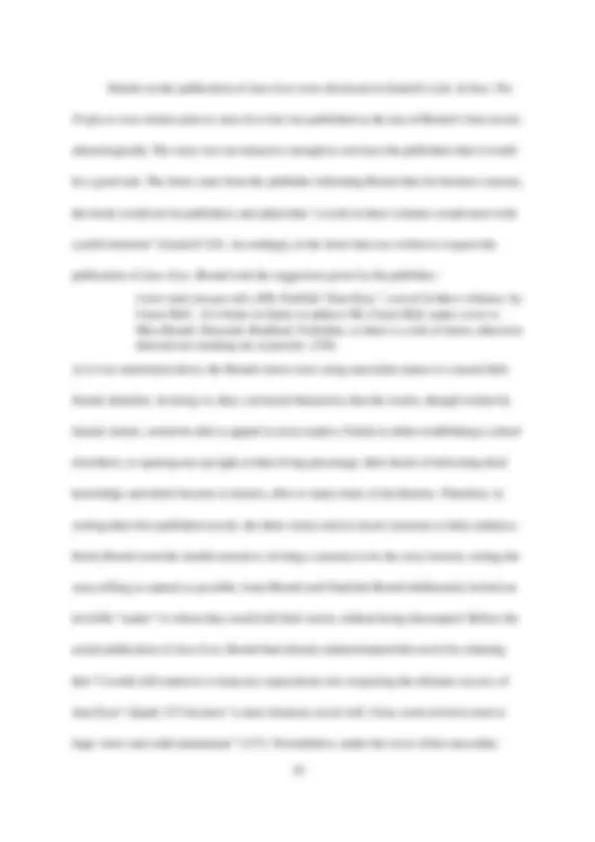
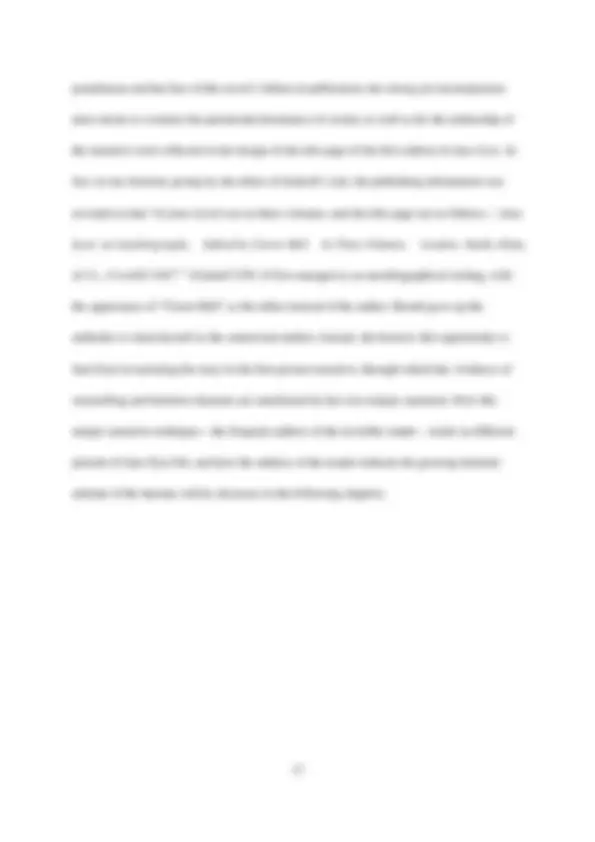
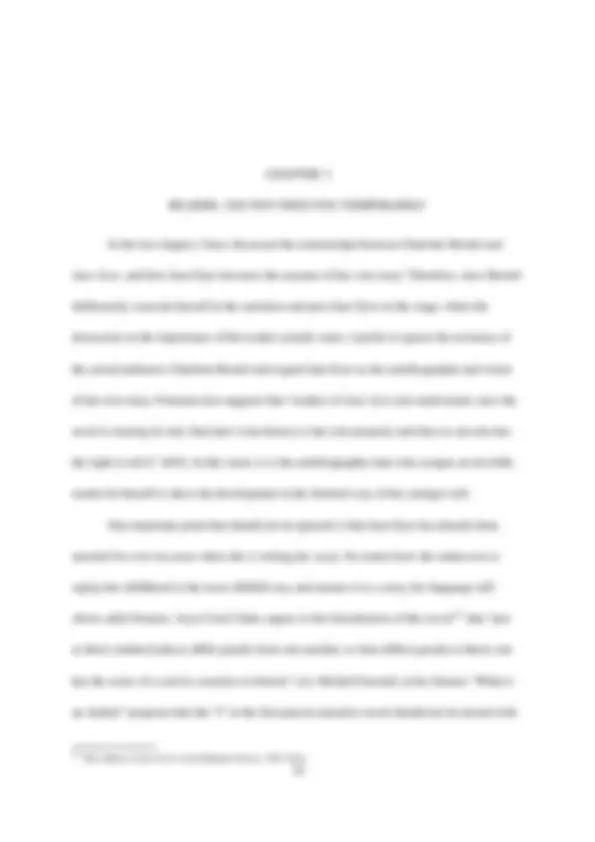
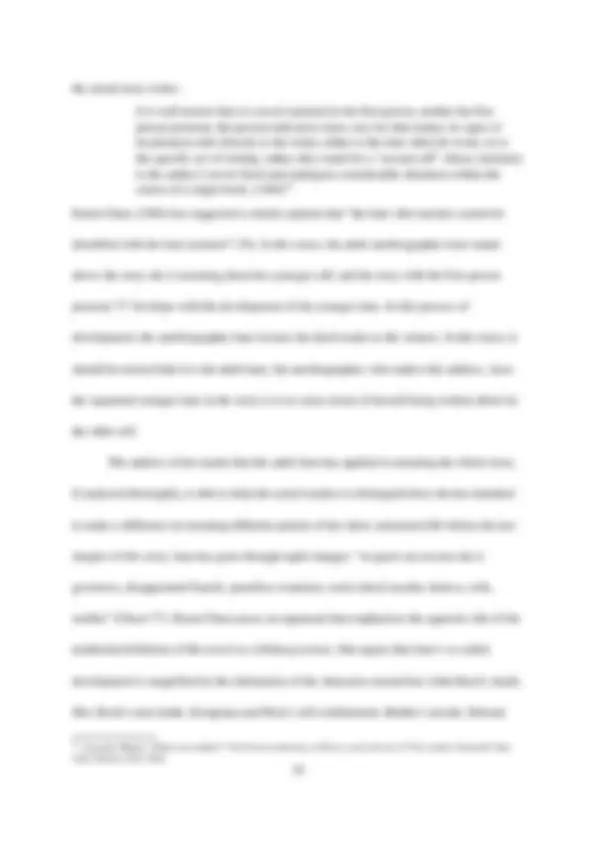
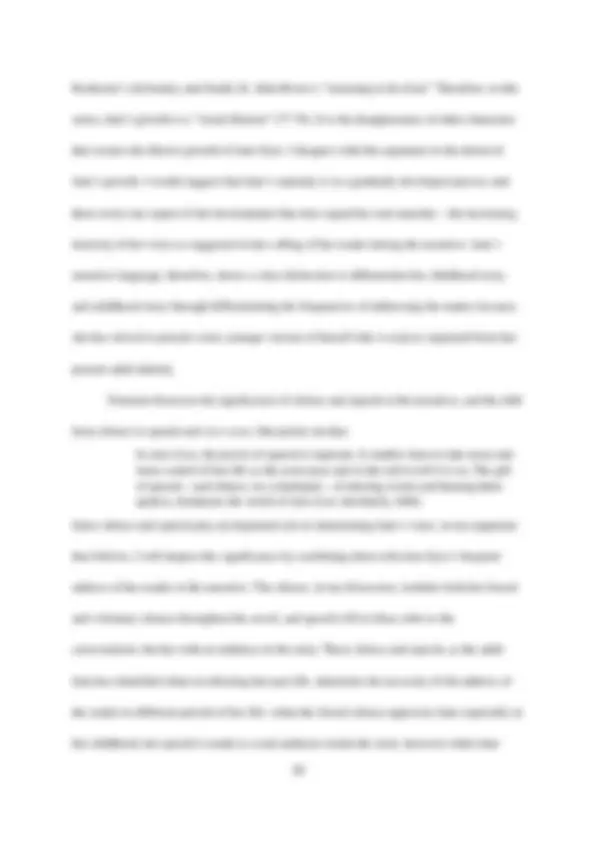
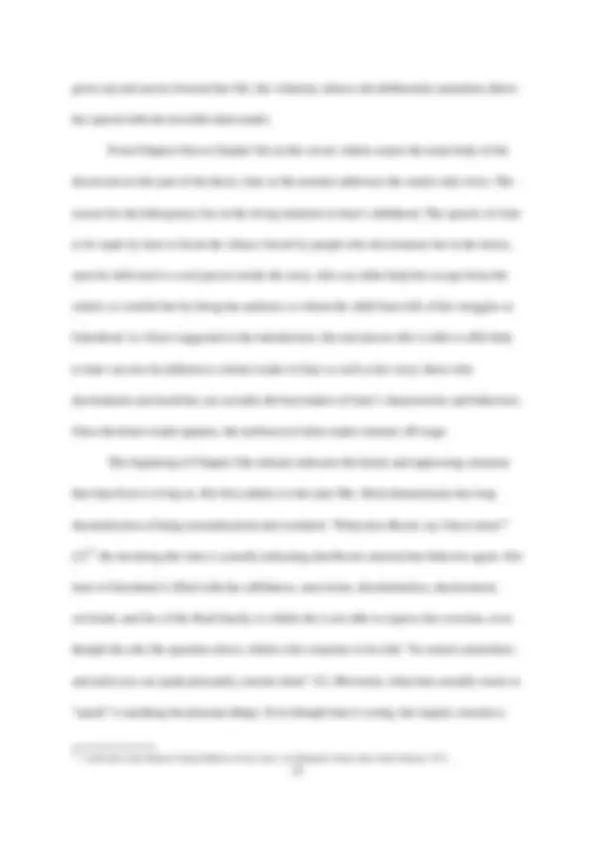
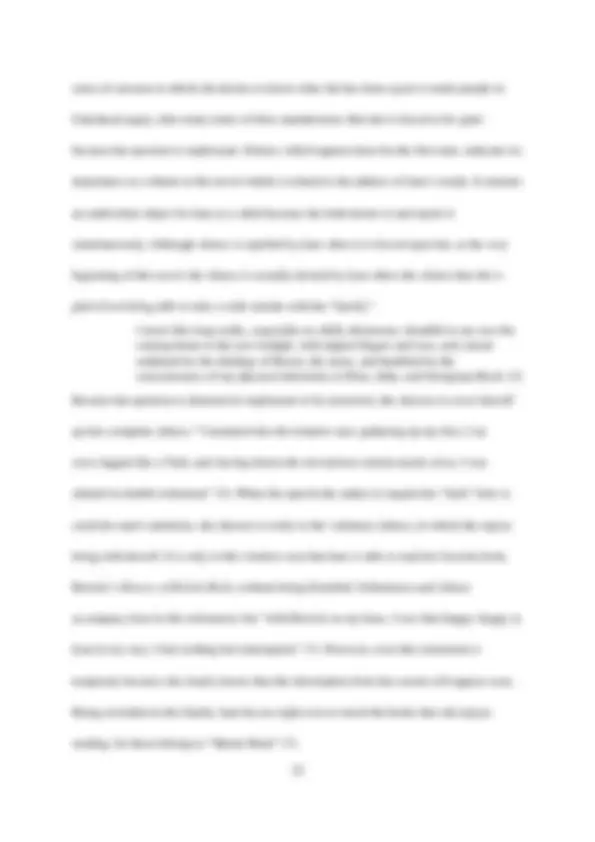
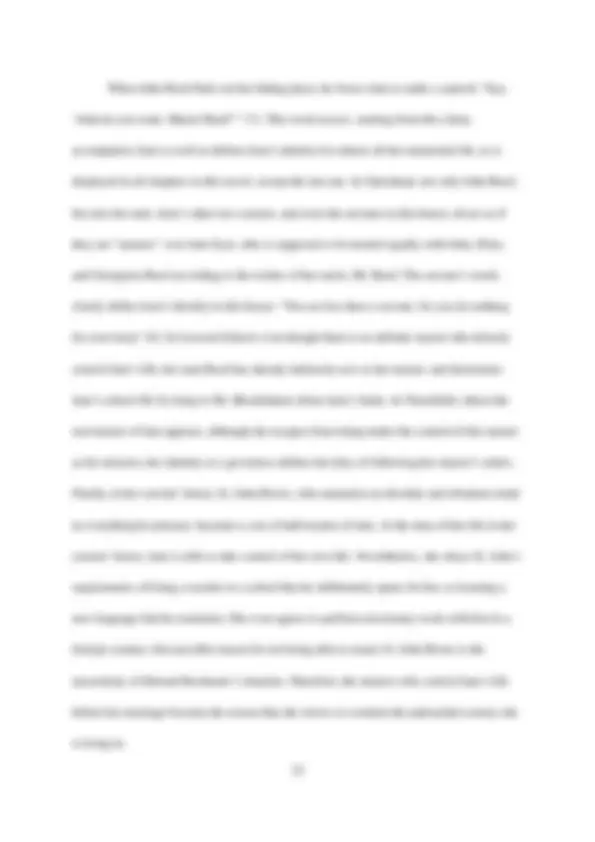
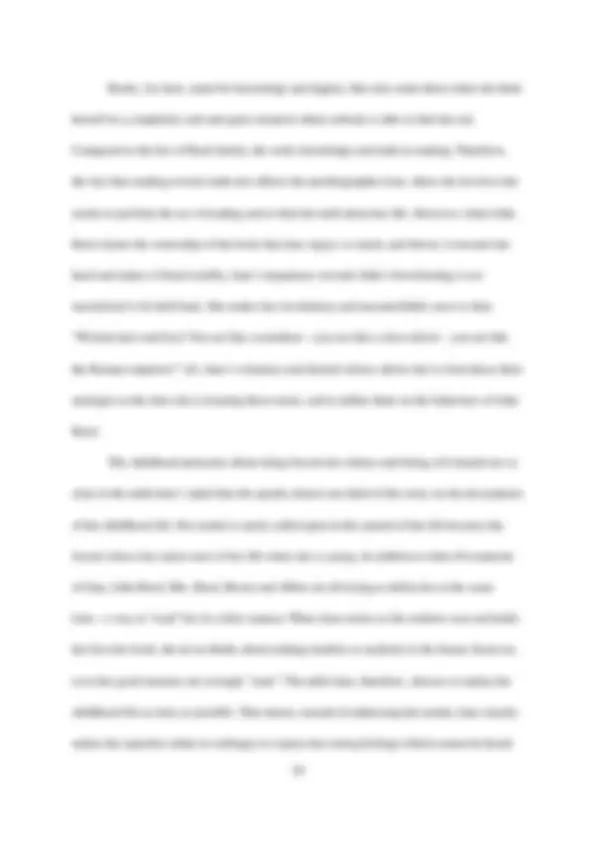
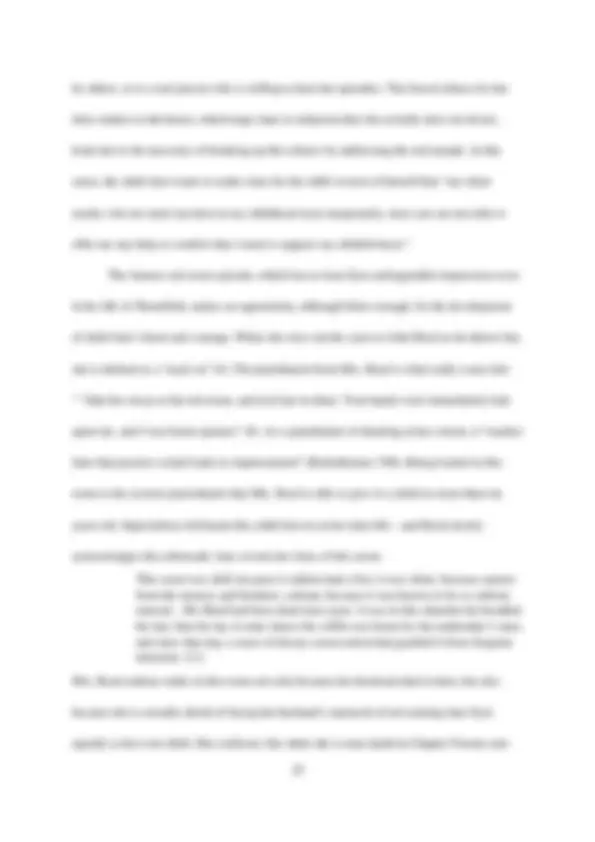
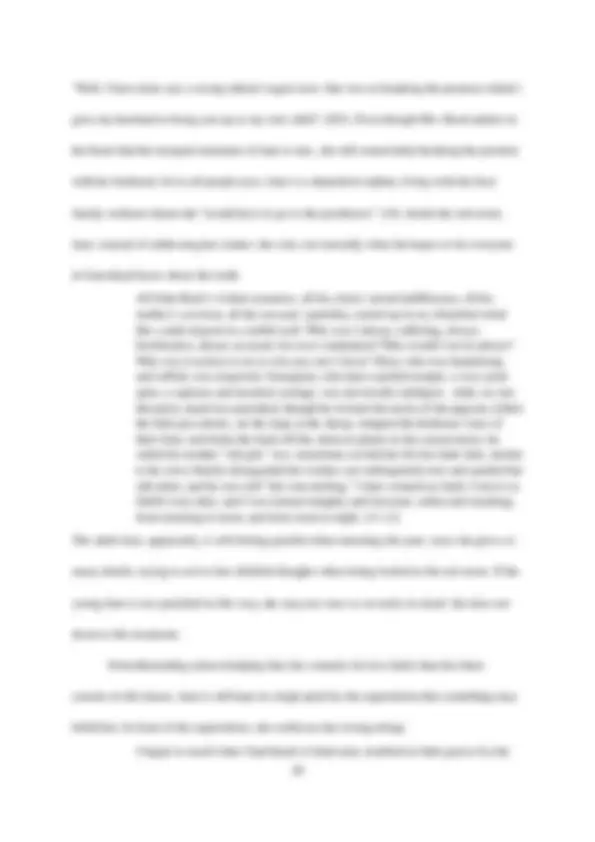
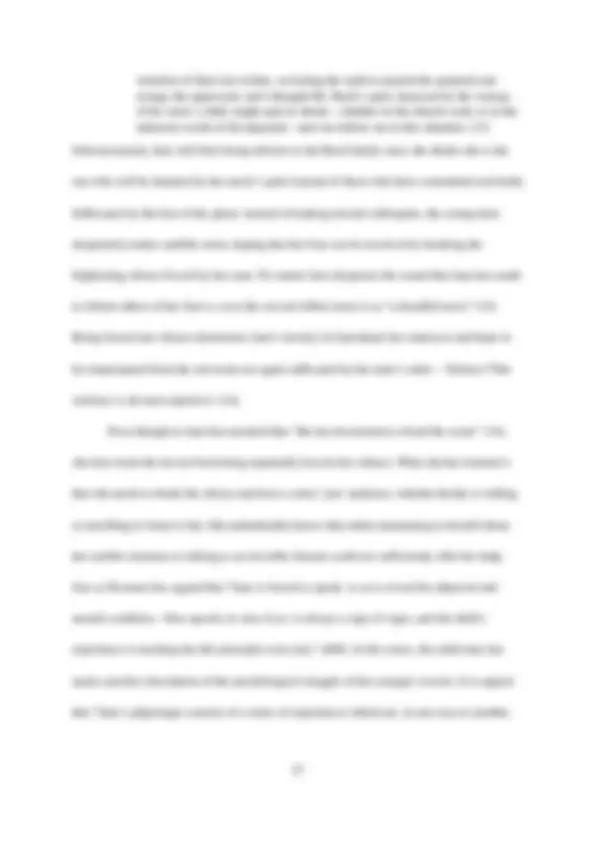

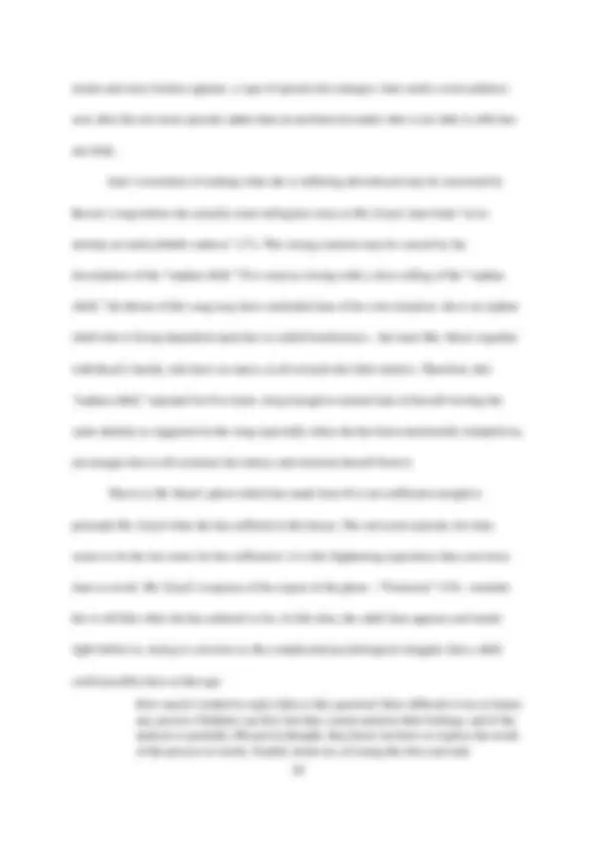
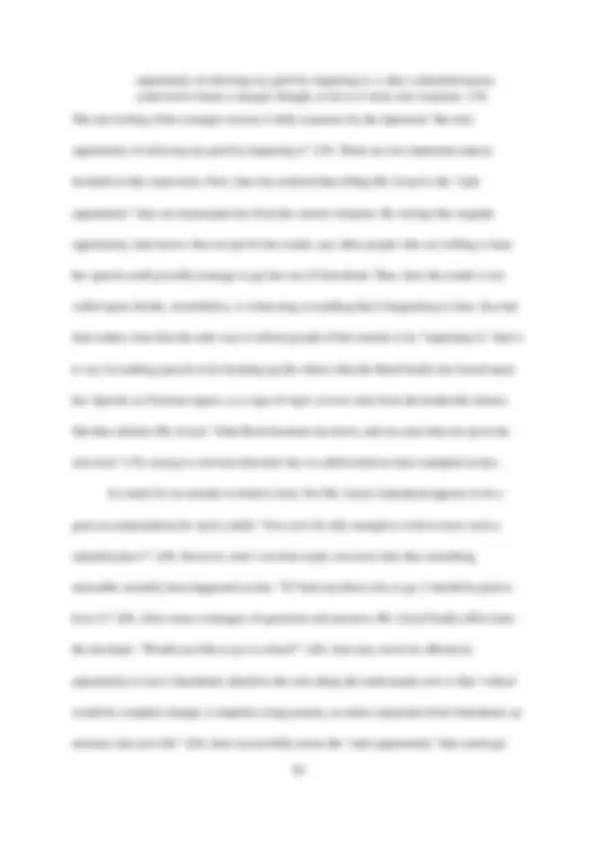
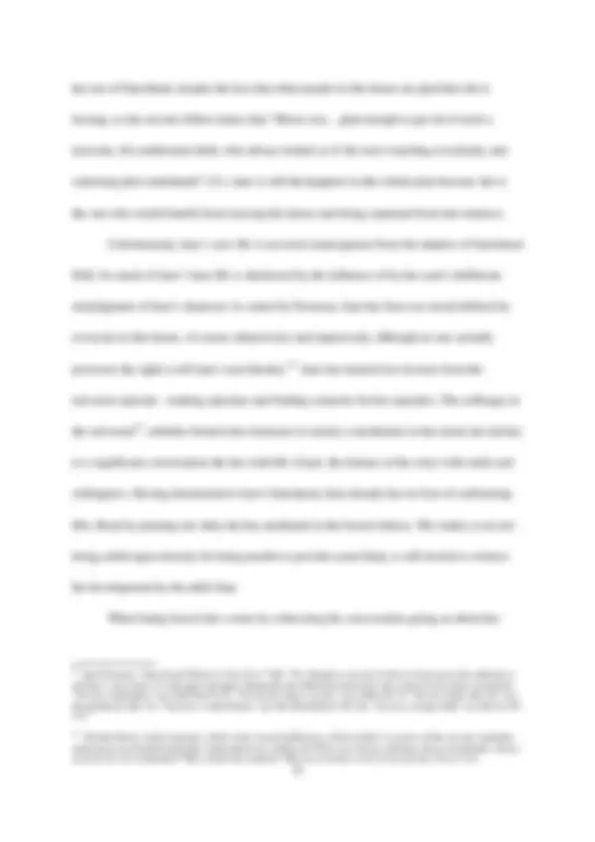
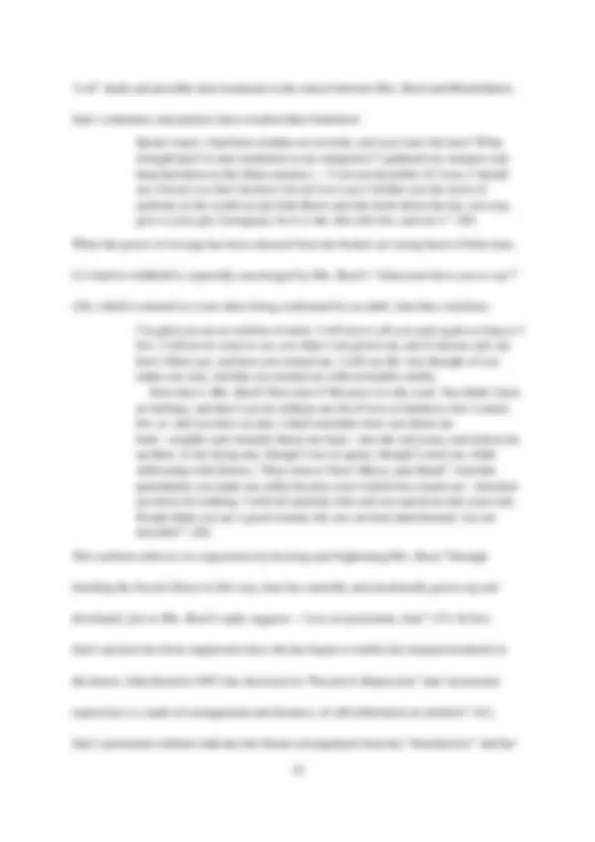
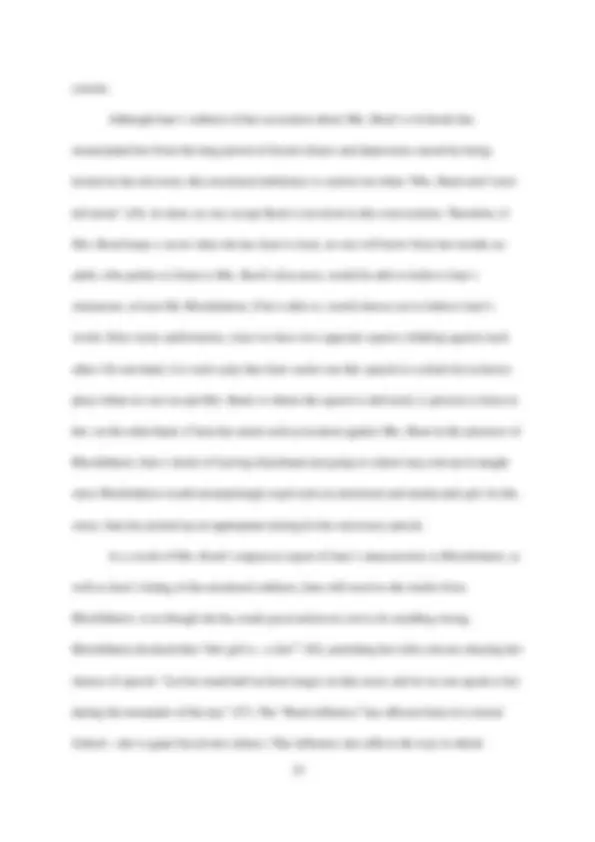
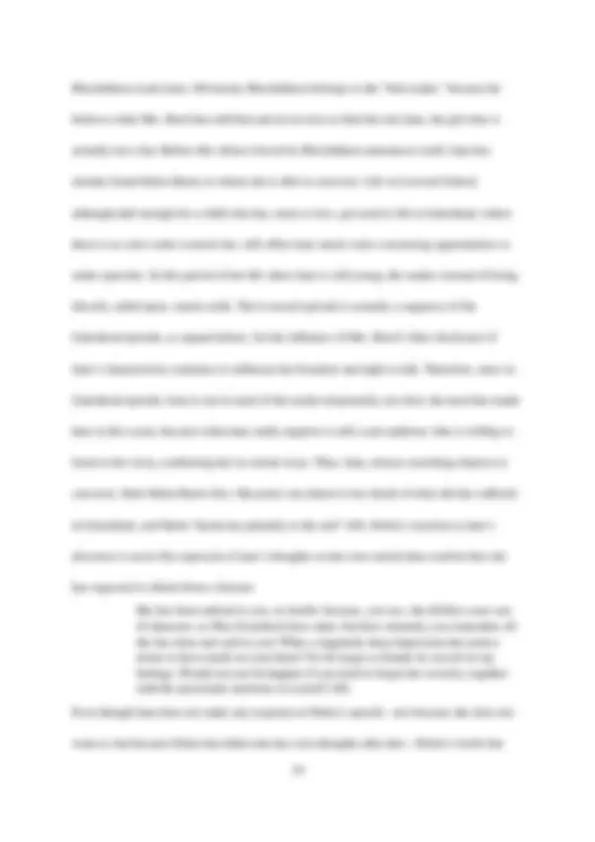
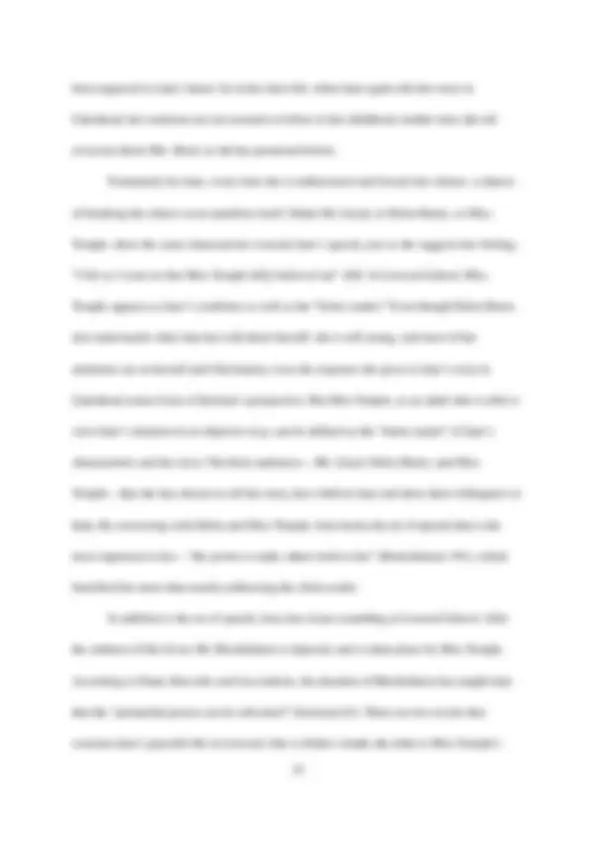
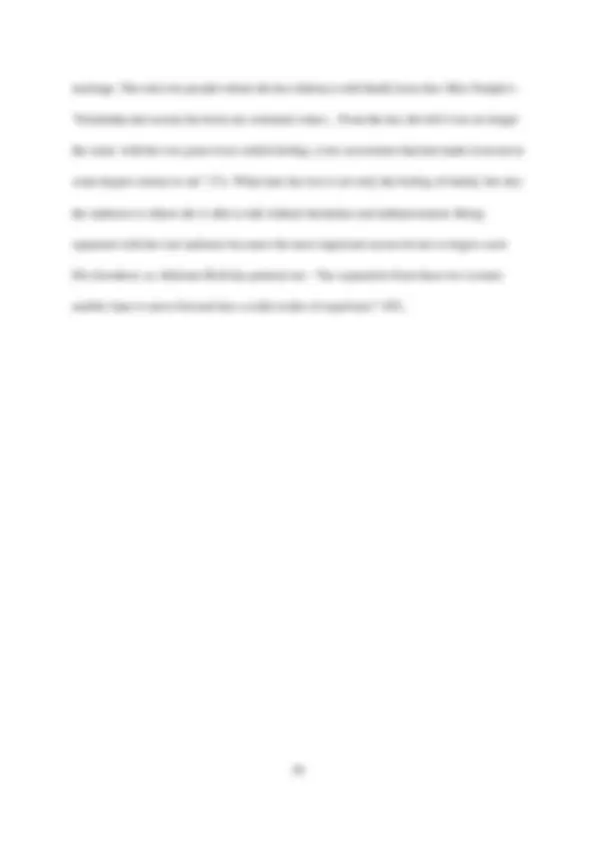
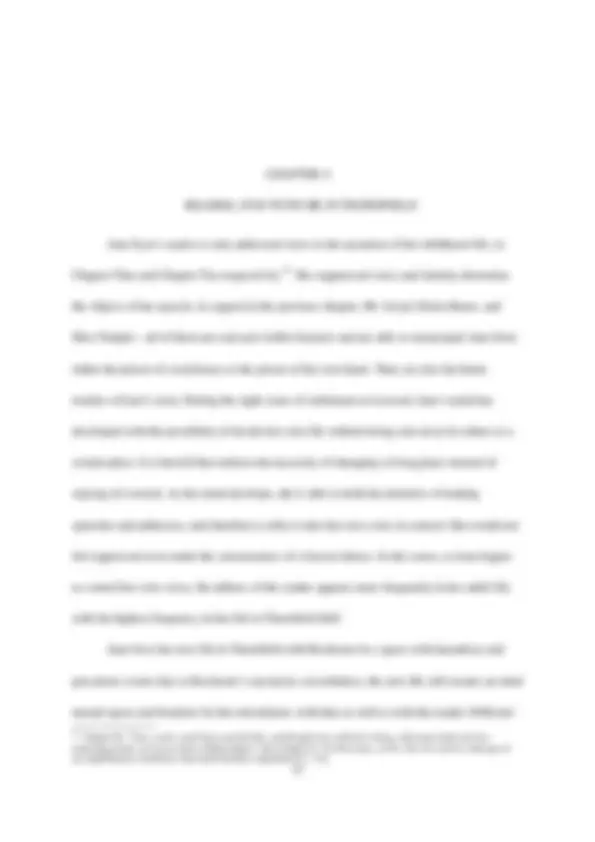
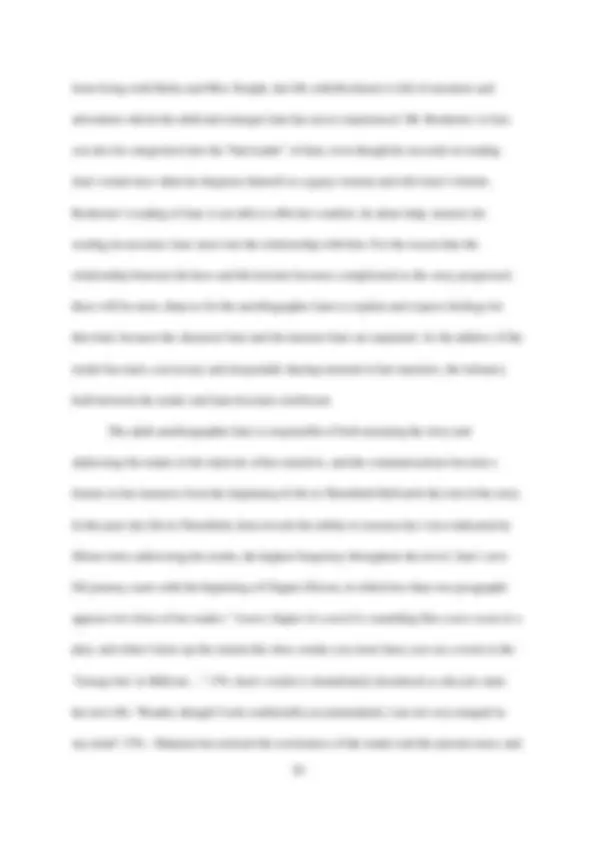
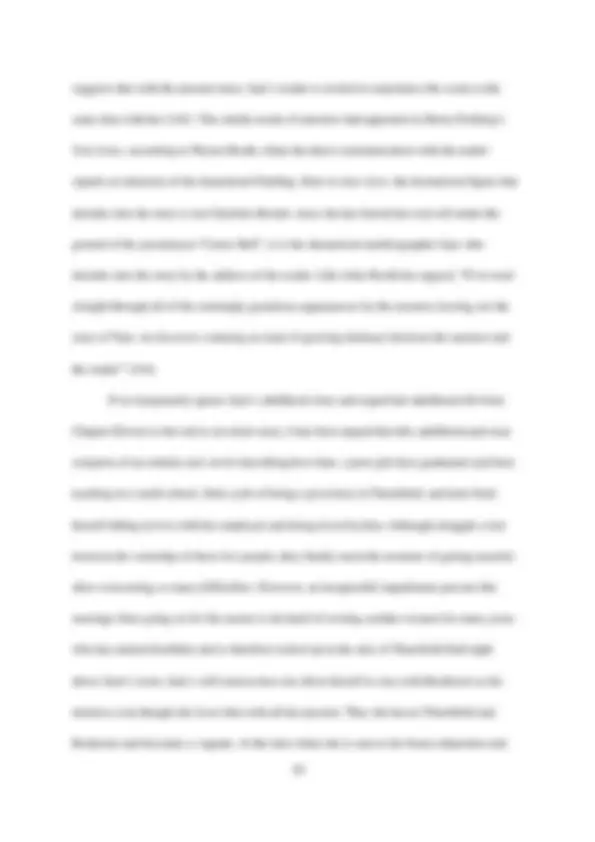
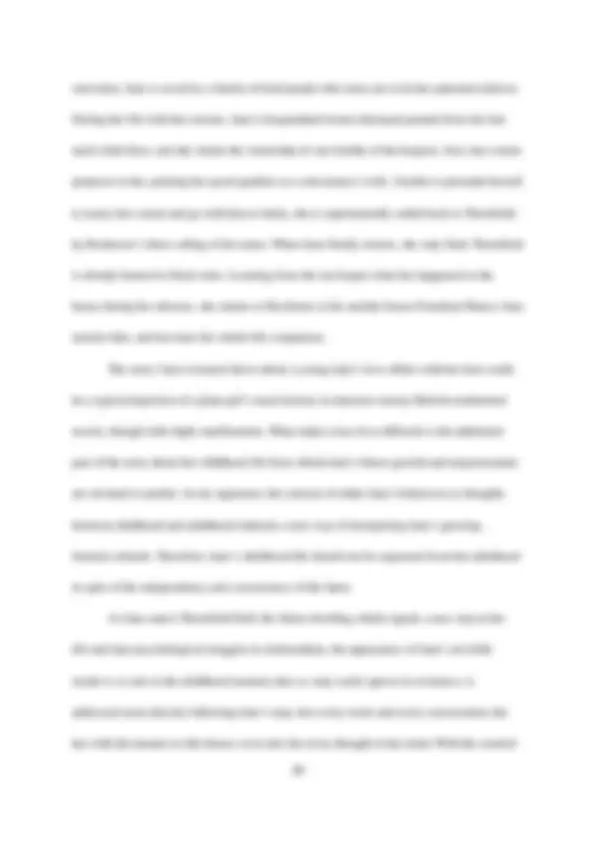
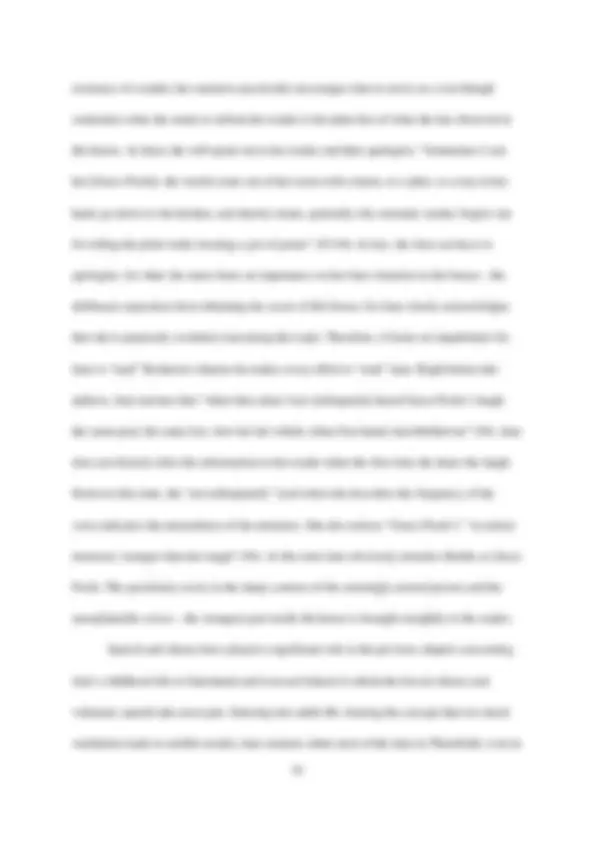
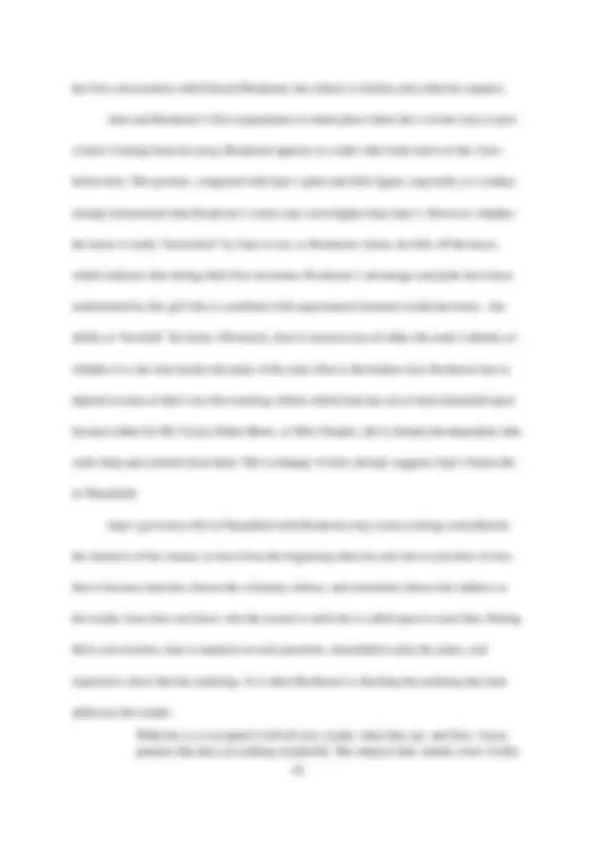
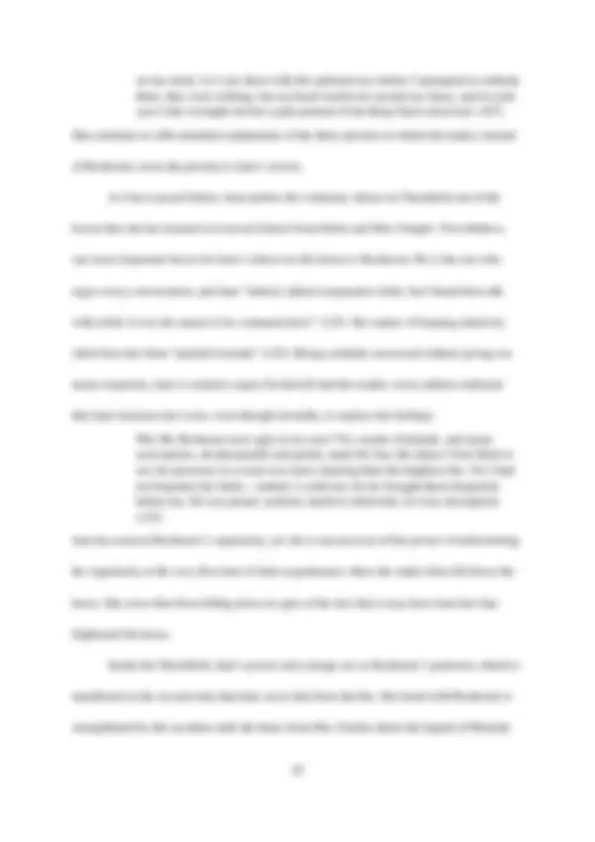
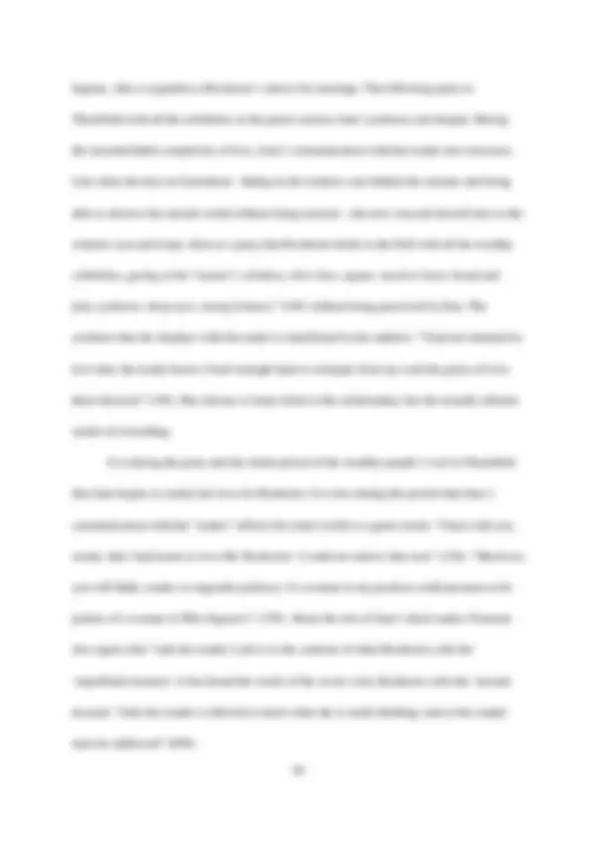
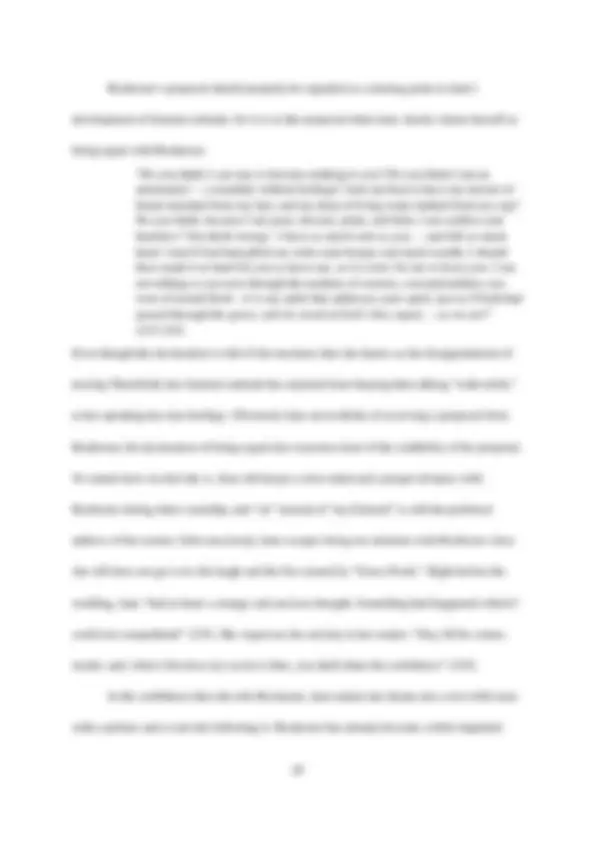
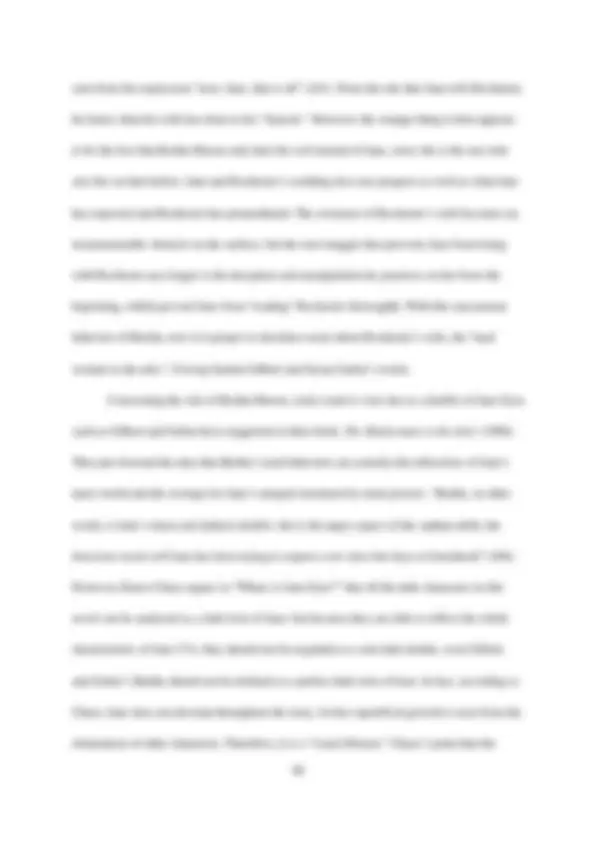
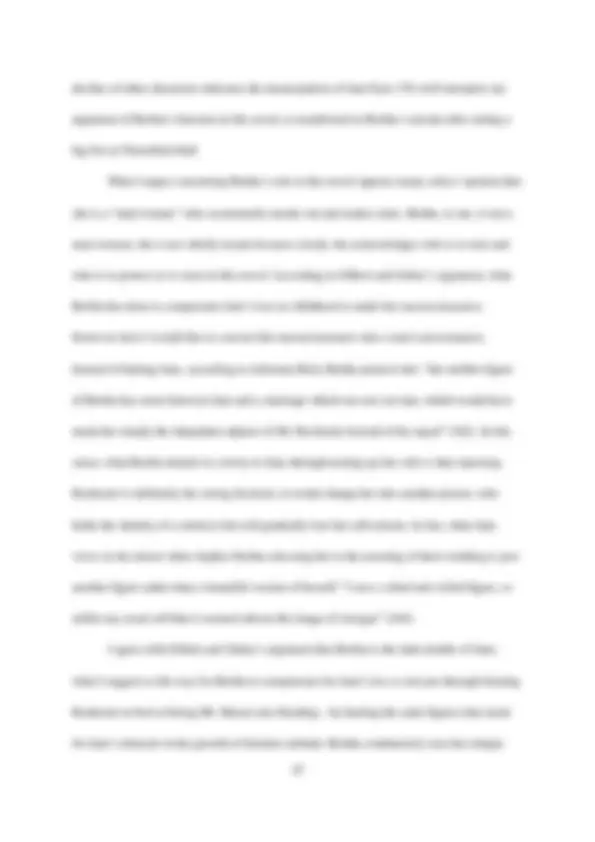
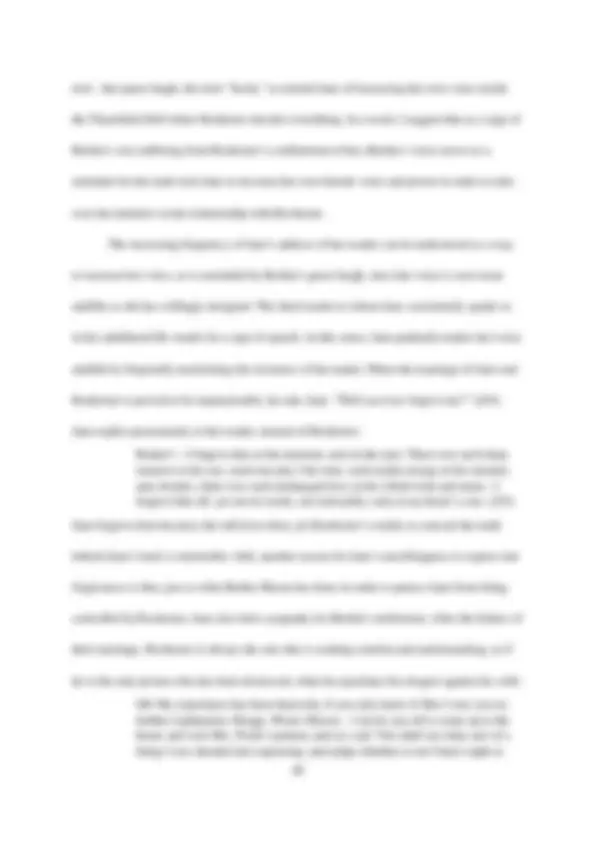
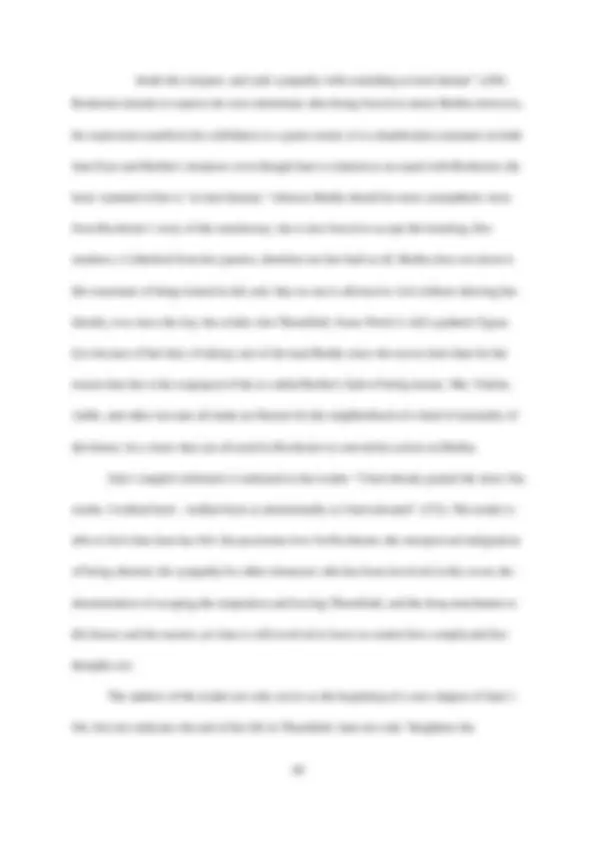
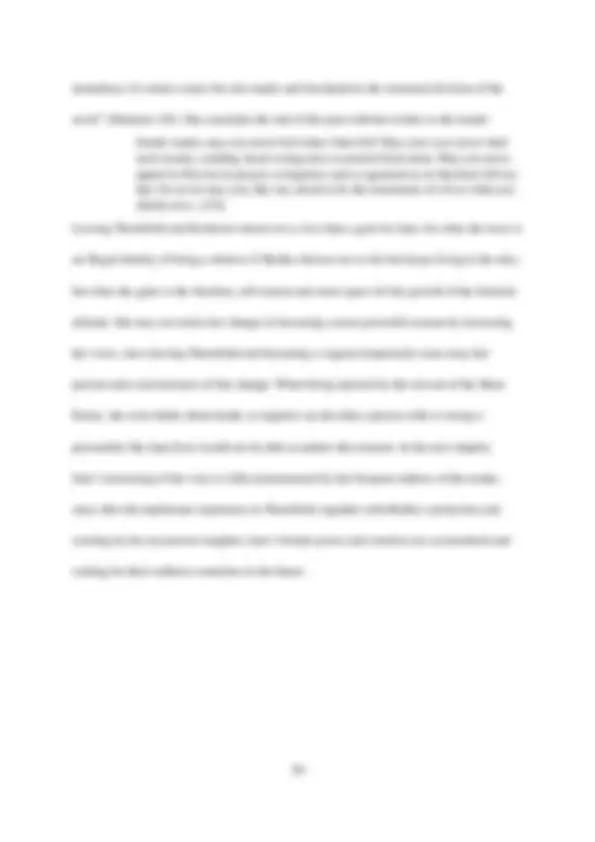
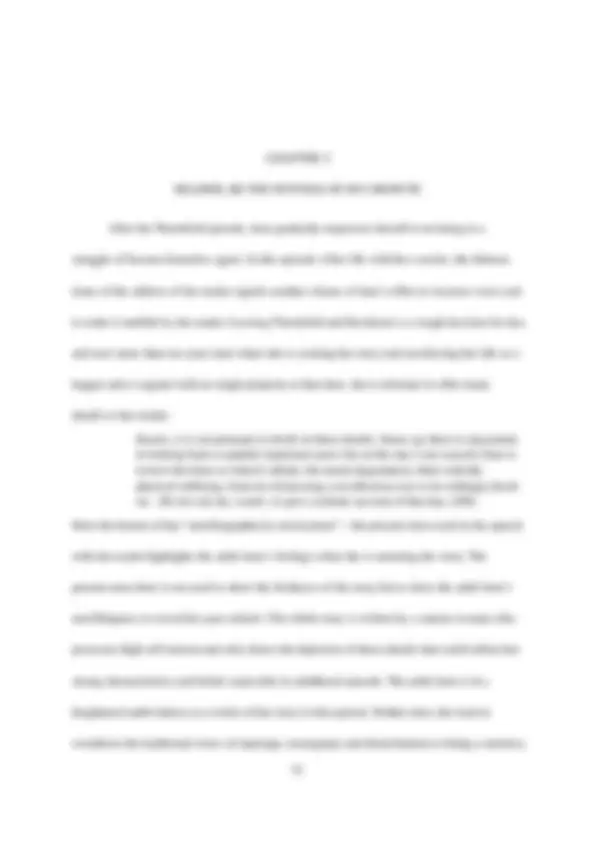
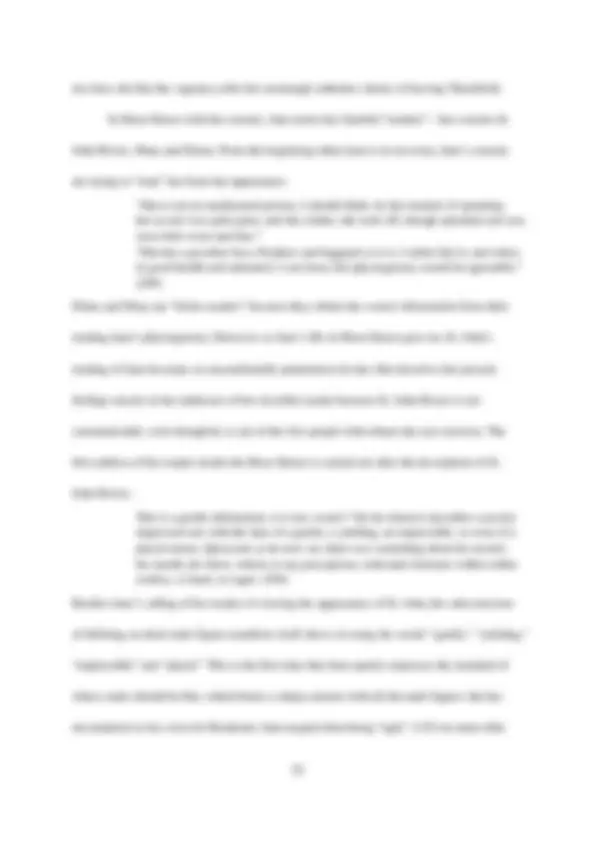
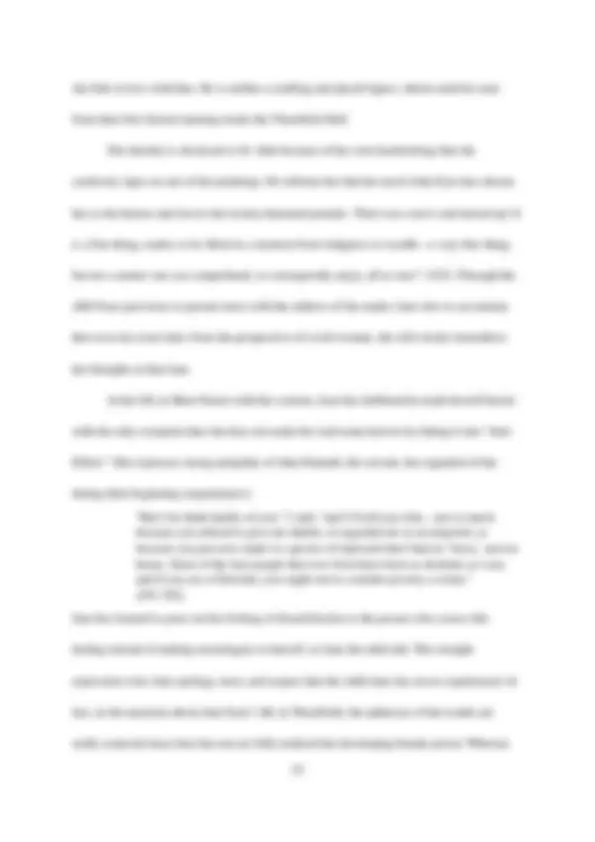
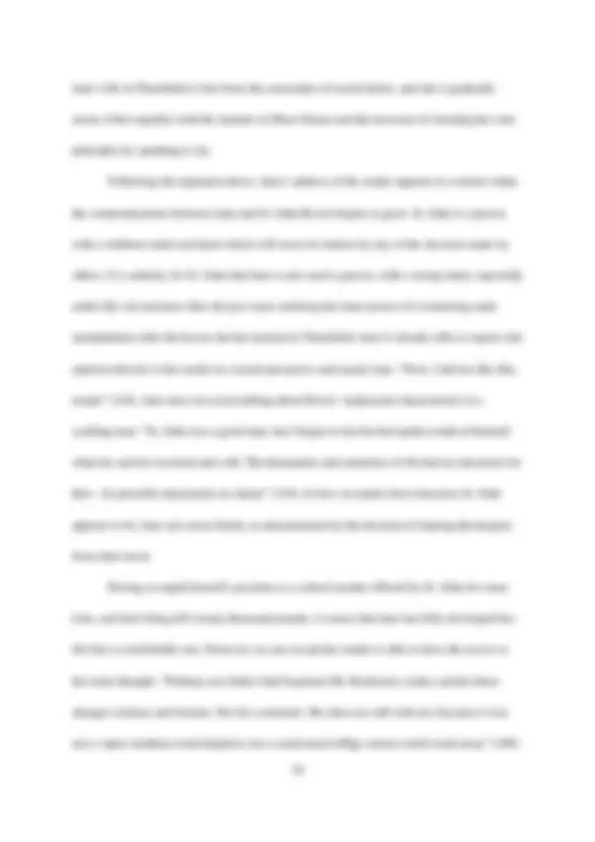
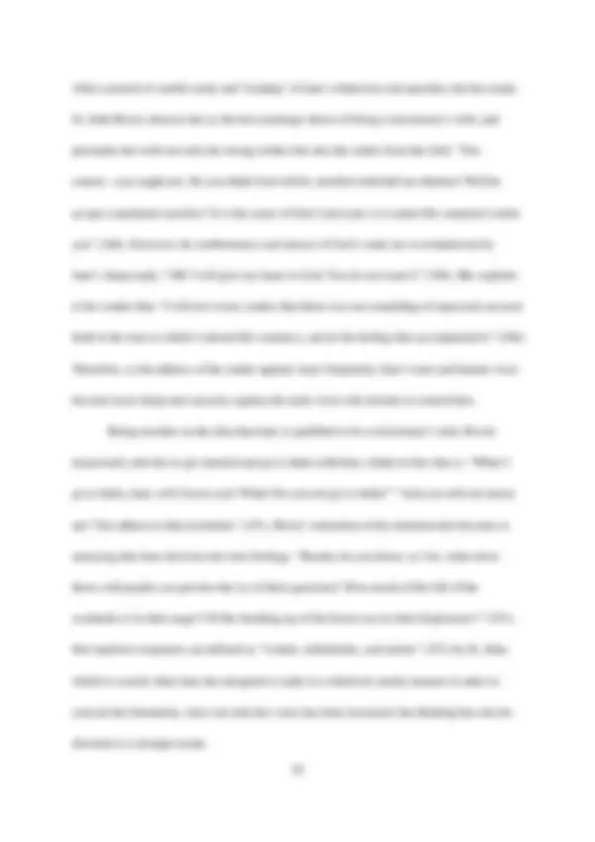
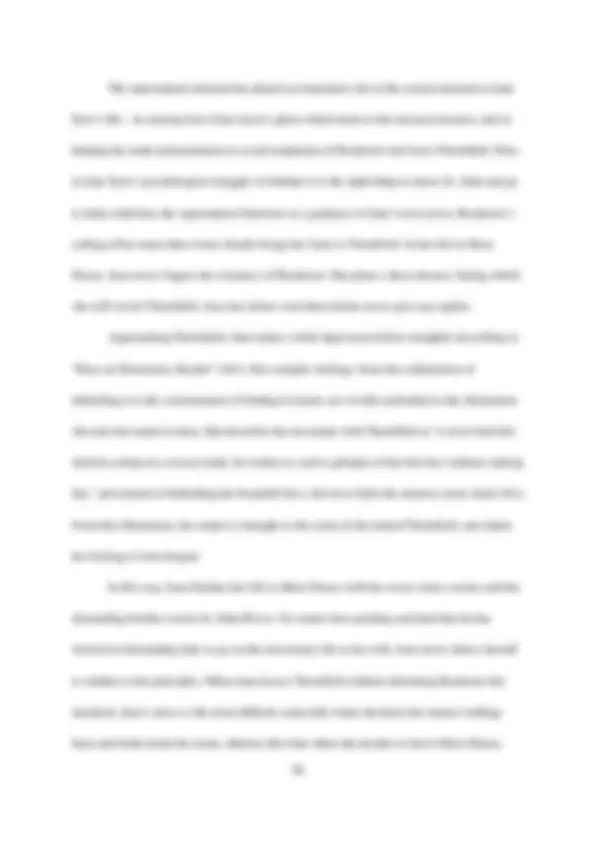
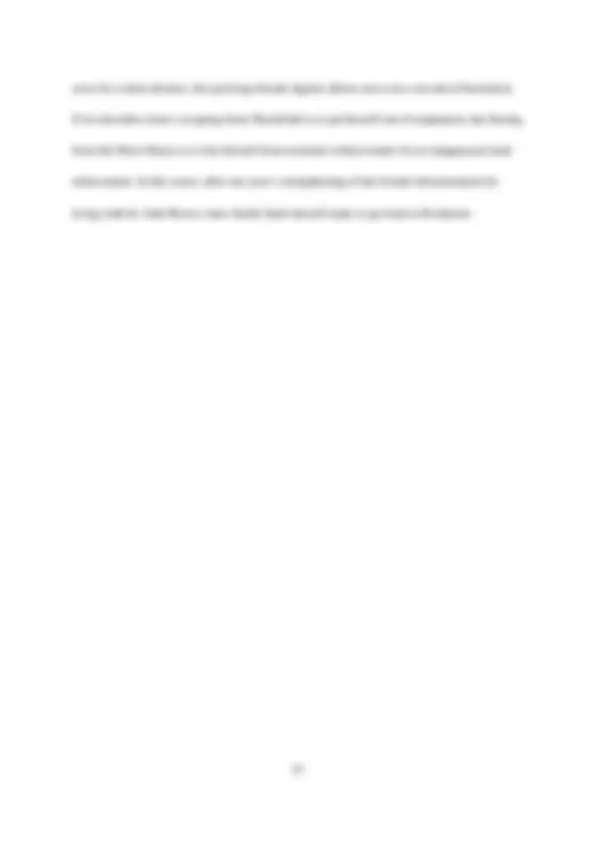
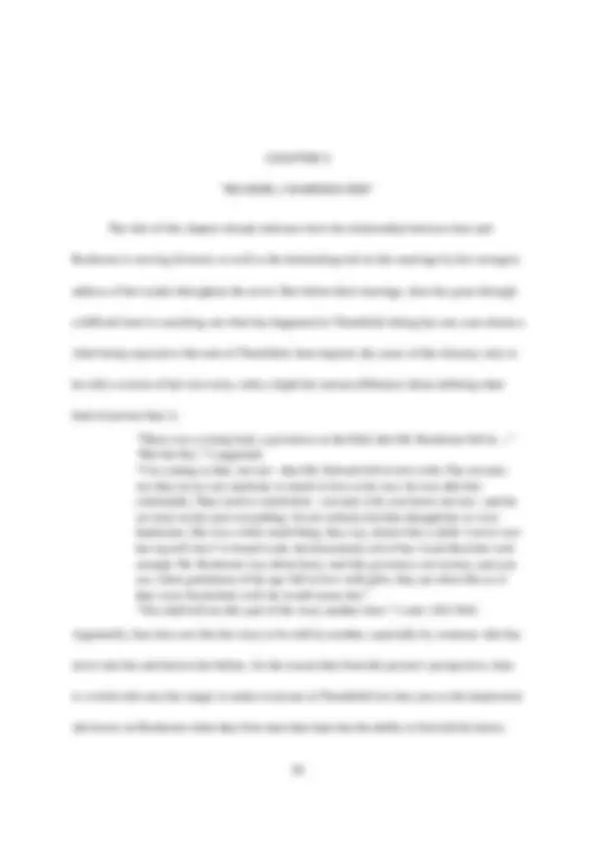
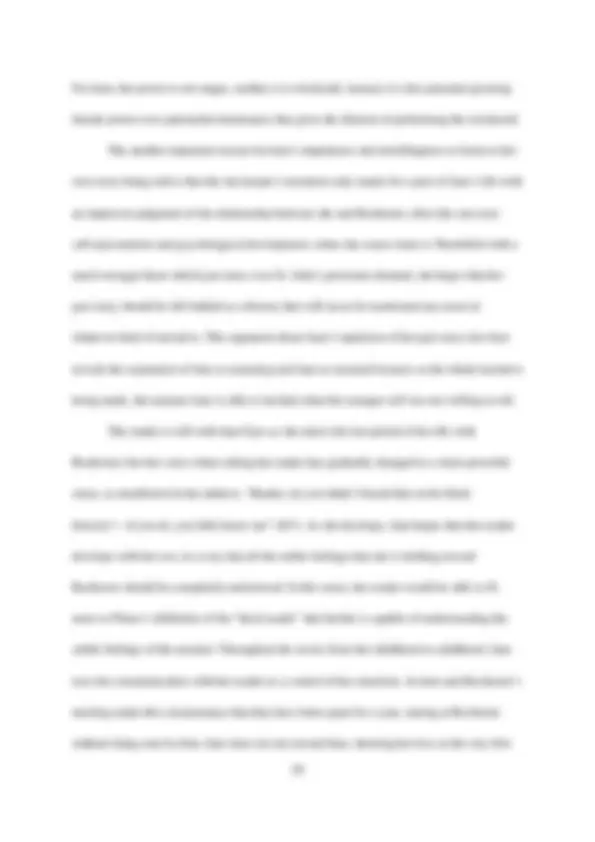
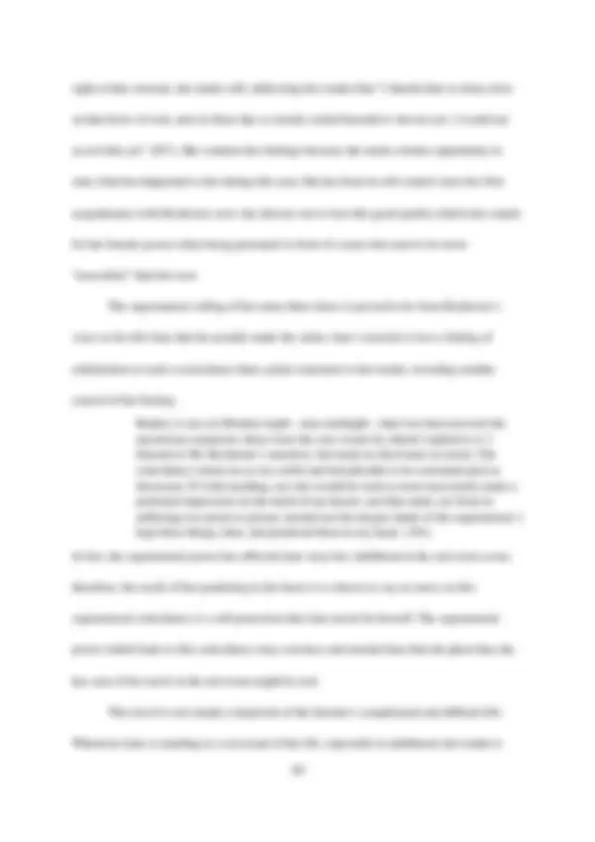
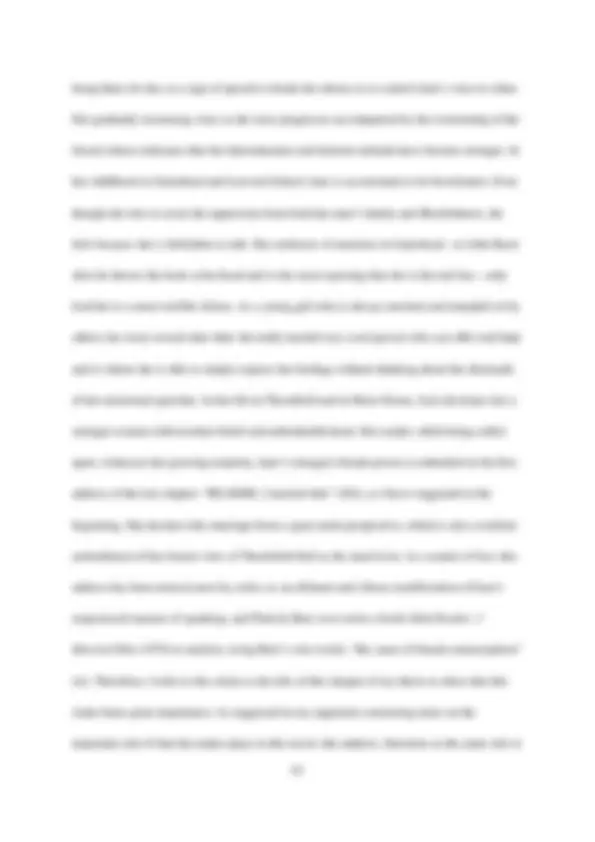
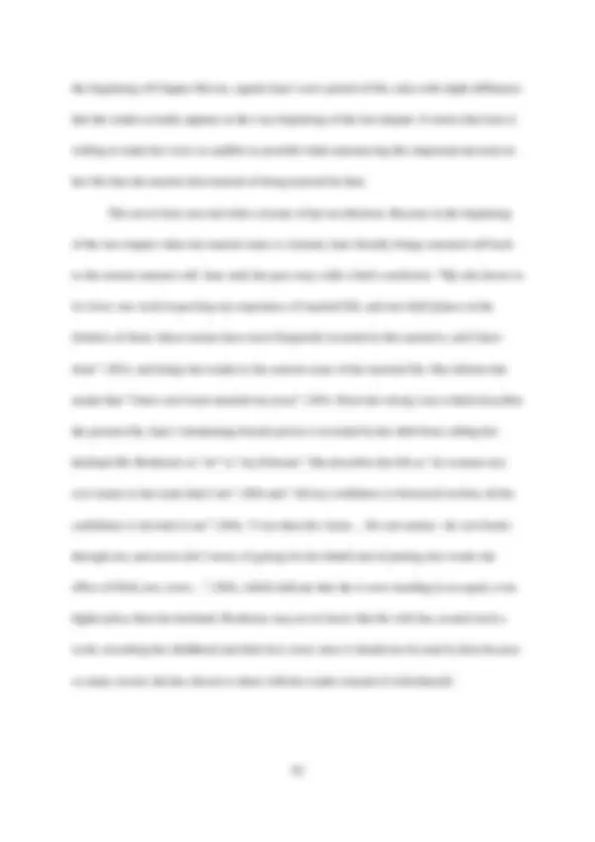
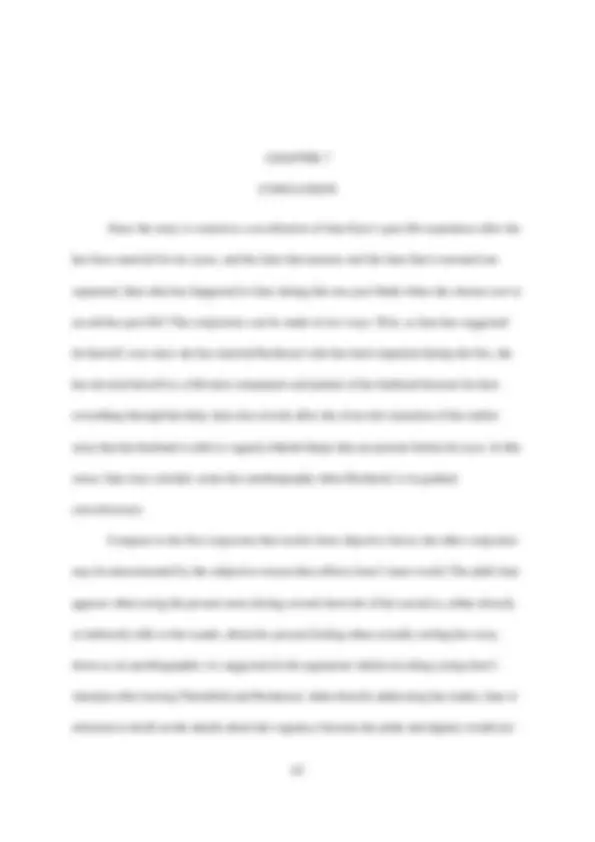
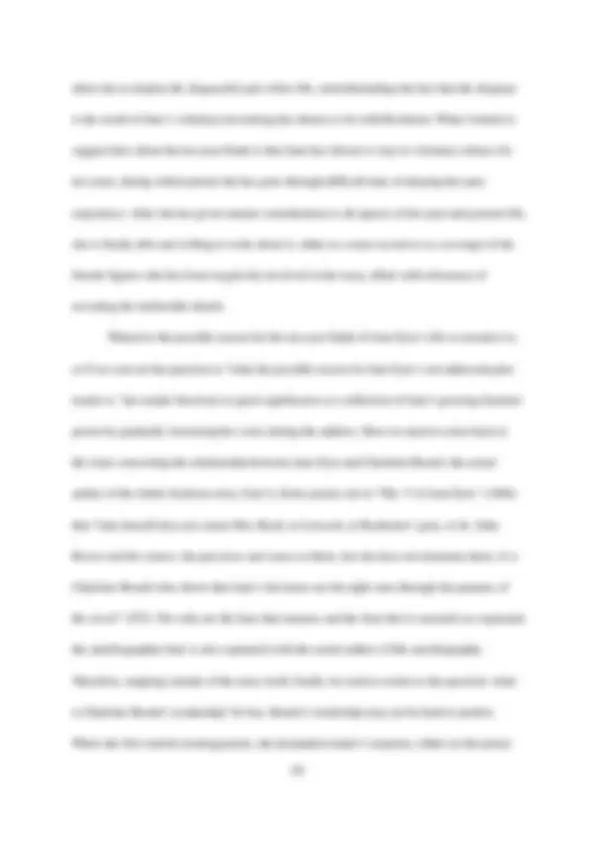
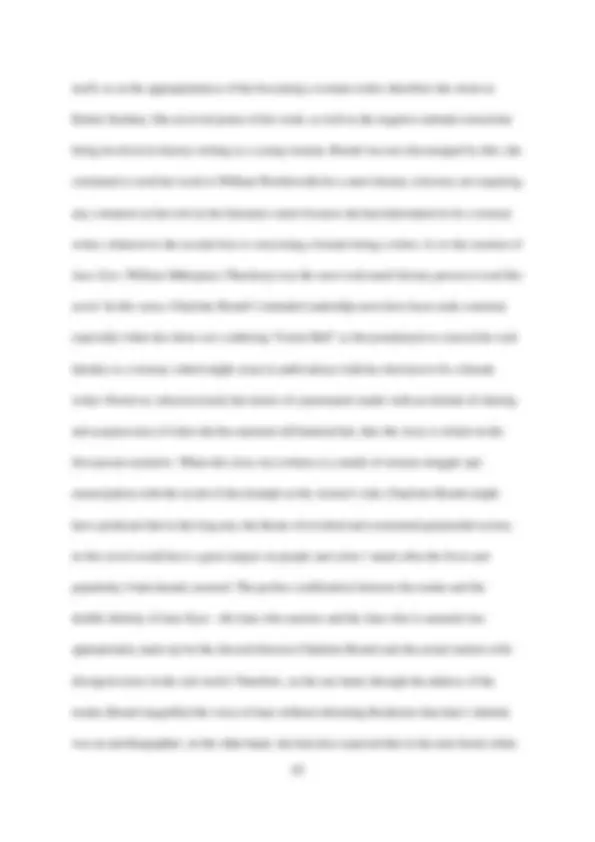
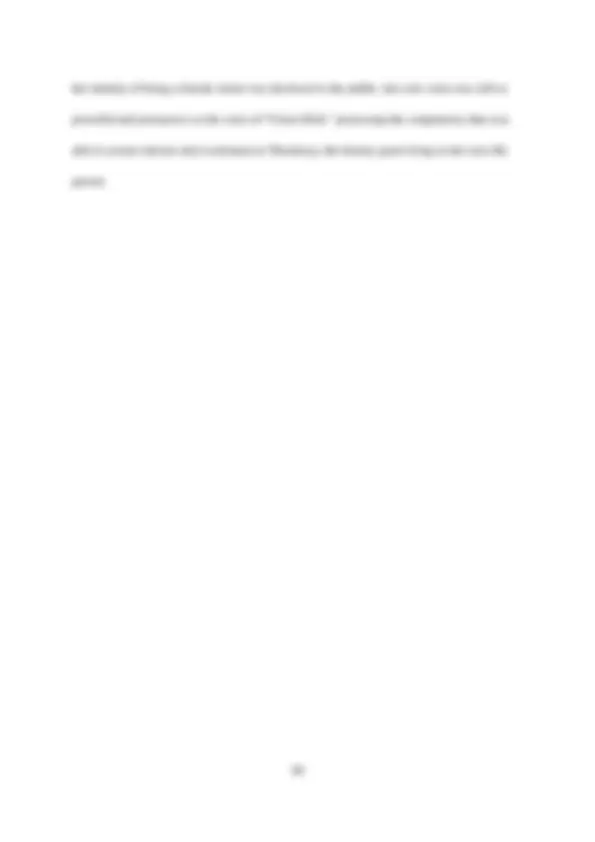
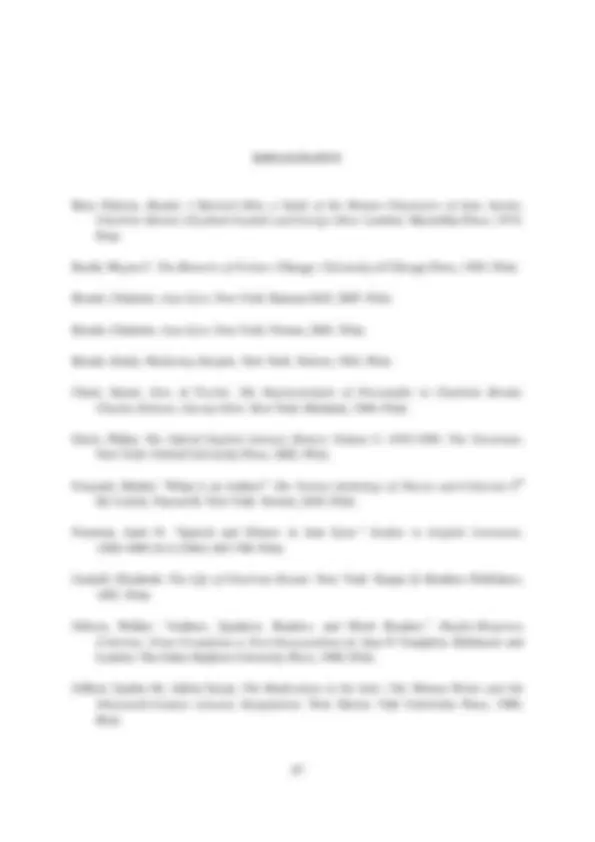
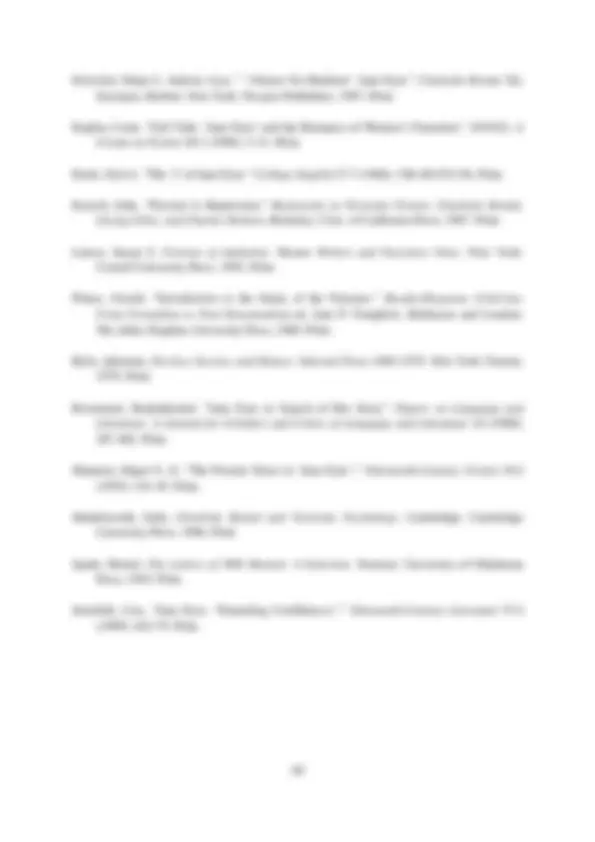
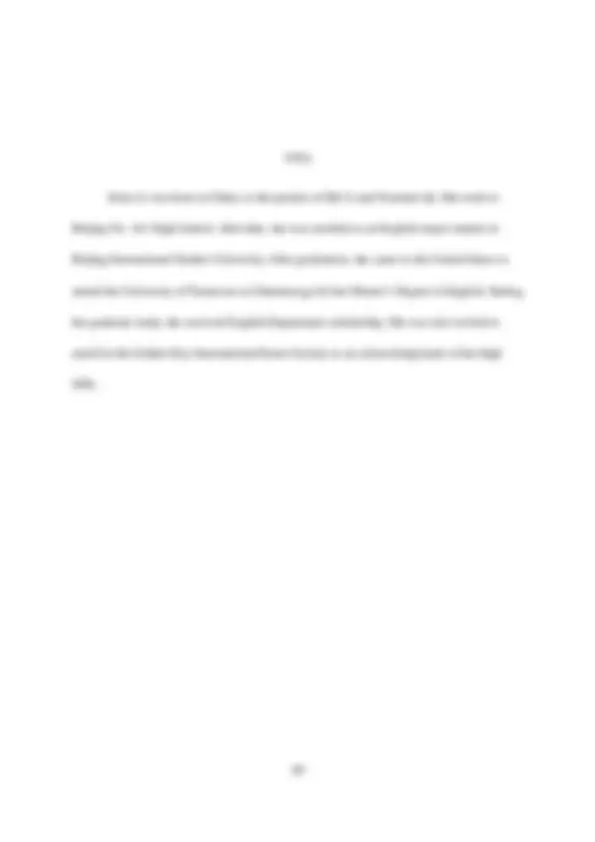


Study with the several resources on Docsity

Earn points by helping other students or get them with a premium plan


Prepare for your exams
Study with the several resources on Docsity

Earn points to download
Earn points by helping other students or get them with a premium plan
Community
Ask the community for help and clear up your study doubts
Discover the best universities in your country according to Docsity users
Free resources
Download our free guides on studying techniques, anxiety management strategies, and thesis advice from Docsity tutors
The fictional Jane Eyre has expected an ideal reader, who approves her story by acquiescence, disregarding Charlotte Brontë's actual readership. Critics have ...
Typology: Lecture notes
1 / 75

This page cannot be seen from the preview
Don't miss anything!




































































Matthew Guy Associate Professor of English (Director of Thesis)
Rebecca JonesUC Foundation Associate Professor of English(Committee Member)
A. Jerald Ainsworth Dean of the Graduate School
Charles Sligh Assistant Professor of English(Committee Member)
Herbert Burhenn Dean of the College of Arts and Sciences
By Siruo Li Approved:
ii
By
Siruo Li
Submitted to the Faculty of theA Thesis in Partial Fulfillment of the RequirementsUniversity of Tennessee at Chattanooga for the Degree of Master of Arts in English
The University of Tennessee at ChattanoogaChattanooga, Tennessee
May 2012
iv
I would like to dedicate this research to my parents Zhi Li, Xiaomei Qi, and my boyfriend Ningyu Zhang.
v
The author expresses her sincere gratitude to the many people without those assistance this thesis could not have been completed. First of all, thanks are due to Dr. Joyce Smith, who helped me form the theme of this thesis in shape two years ago when it was written as a short term paper in her class. Second, I would like to express sincere thanks to Dr. Matthew Guy, my thesis director and one of the committee members, for his magnanimity in expending time and effort to guide and assist me throughout the thesis process. Sincere appreciation is also delivered to Dr. Charles Sligh and Dr. Rebecca Jones, the other two members of my thesis committee, who have also provided invaluable aid and direction for forming ideas and making revisions.
This thesis, as the title shows, will examine the place of the reader in the totality of Charlotte Brontë’s Jane Eyre. Since Jane Eyre ’s publication in 1847 by Smith, Elder & Co., Brontë and this novel have appealed to both general readers’ and critics’ attention. Various studies about this novel that focus on different areas have emerged in Brontë criticisms. Among one of the most contentious issues, is Jane Eyre’s feminist attitude. Generally, critics tend to view Jane’s female role in this novel as superior than those of her related male characters, especially in the episode after her childhood life; but the critics achieve their conclusion using different approaches in the discussions of Jane Eyre’s character, as well as Charlotte Brontë’s supposed projection of herself into this novel. Some scholars used the relationship between Jane and her reader to argue their positions. However, Jane Eyre’s increasing voice through the growing frequency of addressing her reader has never been the exclusive focus of Brontë criticism. Thus, the aim of this thesis is to analyze how the address of the reader throughout the story manifests Jane Eyre’s self-empowerment. However successful this novel was after it was first published, Charlotte Brontë, like other nineteenth-century women writers, was “literally and figuratively confined” (xi).^1 As Gilbert and Gubar state,
(^1) From the preface of Sandra Gilbert and Susan Gubar’s The Madwoman in the Attic (1980).
Enclosed in the architecture of an overwhelmingly male-dominated society, these literary women were also, inevitably, trapped in the specifically literaryconstructs of what Gertrude Stein was to call “patriarchal poetry.” For not only did a nineteenth-century woman writer have to inhabit ancestral mansions (orcottages) owned and built by men, she was also constricted and restricted by the Palaces of Art and Houses of Fiction male writers author. (xi) Therefore, they suggest that the literature by women in the Victorian period features the female impulse to “struggle free from social and literary confinement through strategic redefinitions of self, art, and society” (xii). To struggle against those who deemed that “whatever is unusual is wrong” (1) and thus attacked the theme of this novel, Brontë also stated in her 1847 preface of the first edition of Jane Eyre that “conventionality is not morality. Self-righteousness is not religion” (1), therefore “to attack the first is not to assail the last” (1). In this sense, Jane Eyre’s pilgrimage can be analyzed as her redefinition of her female power and her negation of her natural inferiority and unusualness through increasing her female voice and breaking the confinement of silence and male voices. Since Jane’s voice is gradually increased through the address of her reader, the role that reader plays is also worth deeply analyzing as narrator and narration itself, as suggested in Reader-response Criticism: from Formalism to Post-structuralism (1980). In this book, Walker Gibson and of Gerald Prince provide their perspectives on the reader’s role in a narrative when he/she is not a real person, but an unobserved listener to whom the writer has intended to write. Gibson names the unreal reader as the “mock reader,” putting it in a comparison with a real reader and setting this pair in an analogy with the common pair of comparison between the first-person narrator and the real author. Gerald Prince in his article “Introduction to the Study of the Narratee” also argues the roles of different types of the reader, as a foundation for his real focus on the definition, classification and the role of the
from the housekeeper Nelly Dean, who becomes the narrator of the inner story. As the inner narration begins, Mr. Lockwood’s role automatically switches to a narratee, the receiver of Nelly’s story. Thanks to Mr. Lockwood, the actual readers of this novel are also informed of what he desires to know. In this narrative structure, since Lockwood is a real person whose situation and feeling will affect the story-telling, Nelly’s narration is easily changed: “But here is Kenneth; I’ll go down, and tell him how much better you are. My history is dree as we say, and will serve to wile away another morning” (130).^2 Since Lockwood is still in his recovery from the terror he encounters in Heathcliff’s Wuthering Heights, he is not able to wait until Nelly finishes the whole story. In this way, the situation of Lockwood the narratee easily influences Nelly’s story-telling. In a contrast to the narratee in Wuthering Heights , we look now to the “ideal reader” mentioned earlier that suits the reader’s role in Charlotte Brontë’s Jane Eyre. Reading through this novel carefully, the actual word reader appears so many times that it should not be merely regarded as a simple address by the narrator Jane Eyre. It deserves a special treatment because it signals a way to interpret the heroine’s psychological development as she grows and her feminist attitude in this novel. To state this more specifically, the address of the reader affects Jane’s voice change, which demonstrates that her characteristic power also changes with her voice. Carla Kaplan (1996), Janet Freeman (1984), and Edgar Shannon (1955)’s works, as far as seen from the title, are obviously concerned with the narrative of this novel. Shannon’s view on the change of the narrative tense offers a direct analysis concerning the narrative
(^2) Brontë, Emily. Wuthering Heights. New York: Norton, 1963. Print.
characteristic and how it works to help Jane Eyre express herself. He argues that because the stories have lost their freshness when it is told after so many years of occurrence, the present tense is occasionally used. However, “Charlotte Brontë reduces the handicap inherent in her method by pertinent shifts from the past to the present tense” (141). Carla Kaplan introduces a new term—the “erotics of talk.” In the definition of this term she suggests that “the competing topos…is the search not for a voice, but for a listener capable of hearing that voice and responding appropriately to it. Within many individual texts, this topos takes the form of a repeated and structuring metaphor—a performative trope” (15). She argues that, traditionally, Jane Eyre’s power of using her speech to gain control in the fictional patriarchal society is a successful demonstration of the “politics of voice”—how Jane Eyre uses her voice to overpower the voices of the male figures. However, from the description of her marriage life in the last chapter, one would trace Jane’s actual desire of finding a companion to carry out a conversation—an “erotics of talk” which means an ideal listener. She suggests that “nothing seems to shake her longing to talk, her desire for narrative and story, her belief in the possibilities of exchange” (8). In my argument, I would combine these two aspects together, noting that Jane owns both the “politics of voice” and “the erotics of talk”—the power of her voice to overshadow the male figures and her desire of carrying out a conversation with a listener. Janet Freeman’s arguments touch more upon the issue of Jane Eyre’s reader by analyzing the importance of Jane Eyre’s speech and silence in different situations in this novel. The reader that Freeman refers to is not an invisible figure; instead, she refers the reader to “us”—the actual volume holders—and analyzes what Jane intends to convey to us:
“contemporary psychological discourse.” She argues that Brontë’s novels, if discussed from the psychological viewpoints, should involve the novels’ contemporary psychological trend, the Victorian psychology, in order to thus successfully disclose the true intentions of Brontë in creating those masterpieces: “Nowhere has this tendency to consider novels in isolation from contemporary psychological discourse been more evident than in the domain of Brontë scholarship” (1). Neither Freudian nor other modern psychological theories could sufficiently reveal the psychological struggles within the Victorian novels. Shuttleworth has made an interesting comparison between physicians and novelists concerning their roles in treating people in their effective areas in the mid-Victorian period. She argues that “the goal of the novelist, like that of the physician, is to penetrate hidden recesses, to unveil the concealed inner processes of the social body or the individual mind” (15). In her sense of “penetration,” this superficially inconceivable movement of the examiner’s mind functions by viewing others’ appearances and by reading what has been suggested either on people’s faces or through their gestures and behaviors. The difference of the narrative perspective may affect the “character-penetration” by the narrator. In Shirley , the whole story is narrated from the third-person perspective; therefore the responsibility of the omniscient narrator is to inform the audience of the plot of the story. Therefore, the narrator’s responsibility is to perform an action of informing and analyzing rather than mere narrating. The omniscient narrator hardly involves his/her own feelings because so much happens to every character that he/she has to take care of in the narration. Whereas in Jane Eyre , when the narrator, the adult Jane Eyre appears, especially as a major character on whose experience this story is based, she imbues the narration with her feelings and thoughts. In other words, the story is full of Jane’s own
adventures and emotions, as well as her penetration of different characters around her. Therefore, the reader is needed by the narrator Jane in order to express herself. The communication with her reader involves, for the most part, her feelings toward Rochester and other male figures as well as how she is treated by them. In this sense, through the address of her reader, Jane gradually increases her own voice by informing the reader of her pilgrimage. Critics like Lisa Sternlieb and Susan Lanser prefer to argue the issue of Jane Eyre’s narrative from the perspectives in which Jane’s relationship with her reader has not developed in a harmonious way as is demonstrated in Freeman, Kaplan and Shannon’s arguments. Sternlieb and Lanser’s viewpoints include the separation of Jane’s narrative from the plot and its effects on the reader as well as Jane’s narrative authority over her reader. In “Jane Eyre--Hazarding Confidence” (1999), Sternlieb tries to “defamiliarize the heroine who has engendered a profound but false sense of intimacy with her reader” (455) because she deems that Jane’s narrative and the plot should not be merged together. Before she starts her argument, she already defines this novel as “a revenge novel, one that exposes Rochester’s cruelty to Bertha, to Adèle, and especially to herself” (454) setting the keynote of her perspective and discussion as a negative tone. Jane Eyre thus, in Sternlieb’s eyes, is a writer instead of a narrator. In order to write a novel of revenge, Jane had to have actually started collecting information for her autobiography at the beginning period of her acquaintance with Rochester. Sternlieb also analyzes how Jane uses her subterfuge of narrative to ruin her opportunity to get close with both Rochester and her reader by “tracing Jane’s fascination with vengeance” (455). Susan Lanser studies the narrative voice of Jane Eyre in “Jane Eyre’s Legacy: The Powers and Dangers of Singularity” (1992), arguing that “nothing is more
The approach I will apply in my main argument of Jane’s development is to find out how Jane introduces and communicates with her ideal reader by the direct address and use of the word reader when she is struggling against male figures in the novel, as well as how this word signifies the growing feminist attitude within Jane Eyre’s character, according to different life periods that I identify in this novel. The story can be divided into five parts: Part I is from Chapter 1 to Chapter 4, Jane’s life in Gateshead with her aunt and cousins; Part II is from Chapter 5 to Chapter 10, Jane’s life in Lowood School; Part III is from Chapter 11 to Chapter 27, her life in Thornfield Hall with Mr. Rochester; Part IV is from Chapter 28 to Chapter 35, her life in her cousins’ house; Part V is from Chapter 36 to the end, her life after going back to Rochester. The word reader appears with different frequencies in every part of this novel; and it shows with the highest frequency when the two important male figures step into Jane’s life.^3 Therefore, my main argument will focus on four chapters, which follow the five stages of Jane’s development reflected in her voice in chronological order as listed above (I will combine the first two parts together as Jane Eyre’s childhood). I will analyze how Jane gains her voice and female power by tracing her use of the word “reader.” Freeman also argues at the beginning of “Speech and Silence in Jane Eyre ” that “though no one else in the novel possesses the authority to tell Jane’s story truly, it is told again and again” (684). Then she continues to list how people around defines her. Following Freeman’s argument, I suggest that the characters that appear around Jane can also be identified as the “readers” of Jane’s
(^3) appearing in different chapters, there are altogether thirty-five direct addresses, locating respectively on page 66, 74, 79, 93, (^) I will use the Norton Critical 3rd (^) Edition of Jane Eyre. According to my identification of the frequencies of the reader 107, 125, 147, 149, 158, 220, 235, 245, 255, 272, 274, 280, 281, 294, 312, 325, 327, 334, 340, 346, 351, 352, 355, 357, 361,367, 381, 382, 383. Actually, Freeman and Sternlieb have mentioned the fact that the reader is addressed for over thirty times by using the number given by Sylvère Monod in “Charlotte Brontë and the Thirty ‘Readers’ ofactual page in order to count the appearance of this word. There is none is Part I, two in Part II, 15 in Part III, 13 in Part IV, Jane Eyre .” I also listed the and 5 in Part V.
story as well as her personality; they can also be categorized as good readers and bad readers according to how Jane and her story are received by them. When the good readers appear, Jane’s ideal reader is not needed, for the good readers are able to offer what Jane needs for comfort; whereas when the bad readers appear, Jane turns to the good readers and her ideal reader for help. Before I start with the interpretation of the text, in the following chapter, I will first focus on the relationship between Jane Eyre and Charlotte Brontë, aiming at revealing the reason that Brontë chose the first-person narrative perspective and the necessity of inserting a frequently addressed reader.
The experience in Cowan Bridge School did not leave Charlotte Brontë too many positive impressions not only because the rules were strict for children who were not over ten years old, but also because the ill treatments that her sister Maria Brontë had ever received here, which finally led to her death in a very young age. In Maria’s short period of accommodation in Cowan Bridge, she became the target of one of the superintendents, “who is depicted as ‘Miss Scatcherd’ in ‘Jane Eyre’” (73). The experience of Maria and Helen Burns in Jane Eyre was so paralleled that Mrs. Gaskell claimed that: “I need hardly say that Helen Burns is as exact a transcript of Maria Brontë as Charlotte’s wonderful power of reproducing character could give” (73). Besides the ordeal that Maria had experienced from the “Miss Scatcherd,”^5 a low fever also broke out in the spring of 1825, which was also described in Jane Eyre. Charlotte therefore, was regarded as an “avenging sister of the sufferer” (73) who had kept a vivid record of her sister’s suffering in Cowan Bridge in her depiction of Helen Burns.^6 Except for Maria being the prototype of Helen Burns, the creation of St. John Rivers may also be traced back to a brother of Brontë’s best friend Ellen Nussey,^7 according to Gaskell’s discovery. In one letter that Brontë wrote to Ellen Nussey, she disclosed her true feelings towards Henry Nussey: Now, my dear Ellen, there were in this proposal some things which might have proved a strong temptation. I thought if I were to marry Henry Nussey his sister could live with me, and how happy I should be. But again I asked myself twoquestions: Do I love him as much as a woman ought to love the man she marries?
(^5) privacy and personal security. (^) Elizabeth Gaskell chose not to disclose the real name of the prototype of Miss Scatcherd in Jane Eyre for the sake of (^6) poor living condition, the bad food, all the terrible managements in this school were vividly depicted into the Jane Eyre’s (^) Actually not just the suffering that “Miss Scatcherd” was giving to Maria Brontë which was included in Jane Eyre , the experience at Lowood School. (^7) Henry Nussey.
Am I the person best qualified to make him happy? Alas! Ellen, my conscience answeredlittle of me he could hardly be conscious to whom he was writing. Why! It no to both these question…Moreover, I was aware that he knew so would startle him to see me in my natural home character; he would think I wasa wild, romantic enthusiast indeed. I could not sit all day long making a grave face before my husband. (173) From Brontë’s depiction of Henry Nussey, who was also a curate at Donnington in Sussex, and their short courtship and marriage proposal, it is not hard to imagine that Henry was the prototype of St. John Rivers. In writing Jane Eyre , Brontë clearly magnifies either the characteristics of Henry Nussey in the depiction of St. John Rivers, or their relationship when describing Jane’s accommodation at the Moor House. Having found the prototypes of certain characters in Jane Eyre does not indicate that Jane’s prototype is Charlotte Brontë herself, even though it is the best guess that the critics can make when regarding this novel as a semi-autobiography. This conjecture might be the last reception of this novel that Charlotte Brontë had expected to receive. To avoid being recognized as the author of either the collection of the poems or the later prose in the suspicion of self-publicity, Charlotte Brontë informed her friend in one letter: Averse to personal publicity, we veiled our own names under those of Currer,Ellis, and Acton Bell; the ambiguous choice being dictated by a sort of conscienctious scruple at assuming Christian names positively masculine , while we did not like to declare ourselves women, because—without at the timesuspecting that our mode of writing and thinking was not what is called “feminine”—we had a vague impression that authoresses are liable to be lookedon with prejudice. (Gaskell 299)
Even though Brontë preferred not to admit Jane Eyre’s story derived from her own experience, she told her sister that “I will show you a heroine as plain and as small as myself, who shall be as interesting as any of yours” (Gasekll 324). She did contemplate on the idea of creating a heroine who maintained the same appearance of herself and characteristics of her